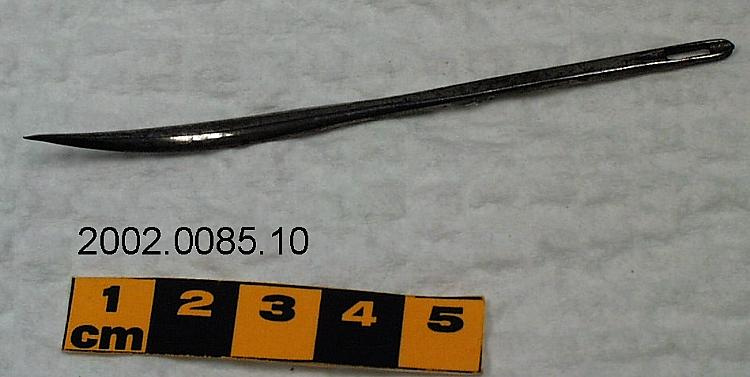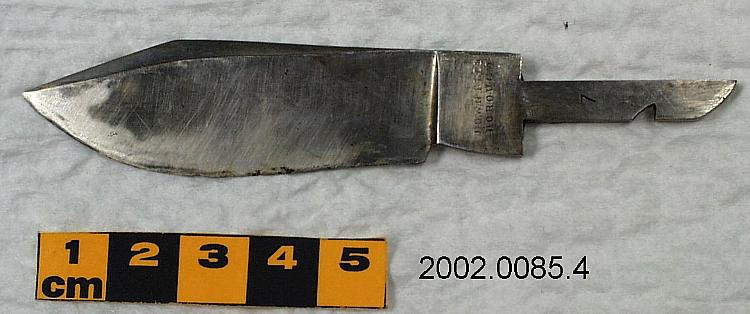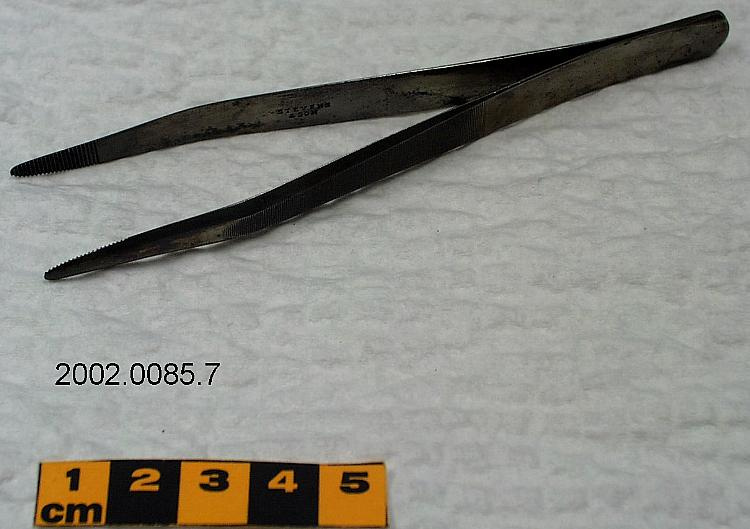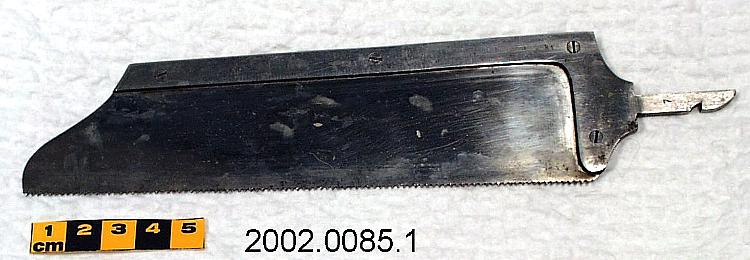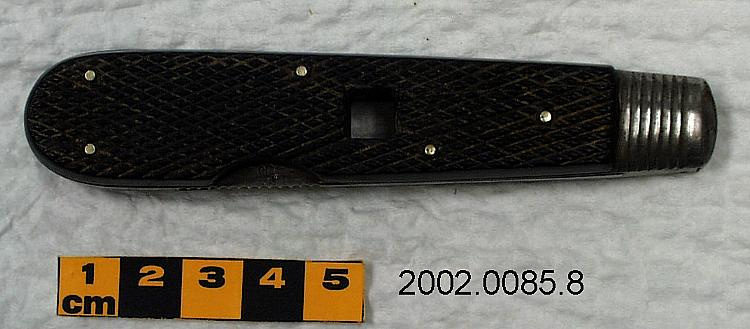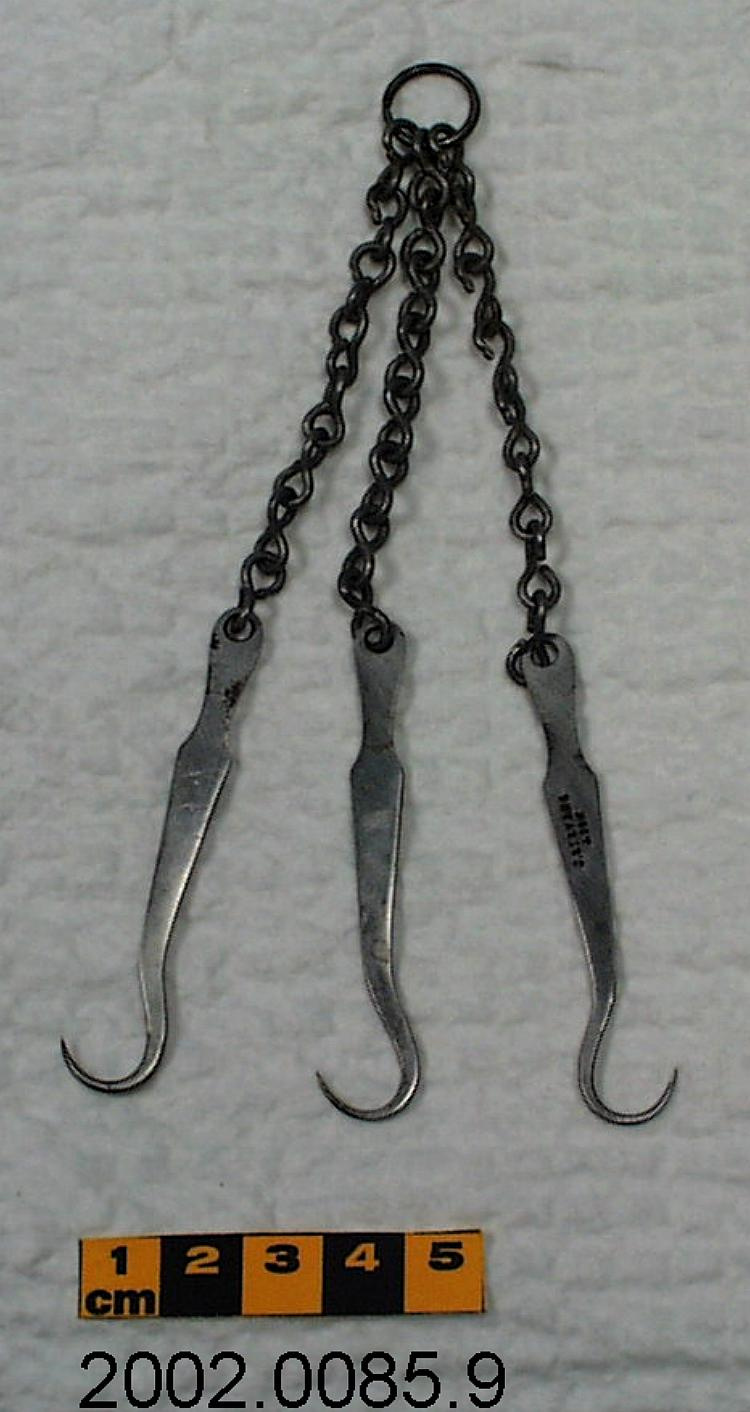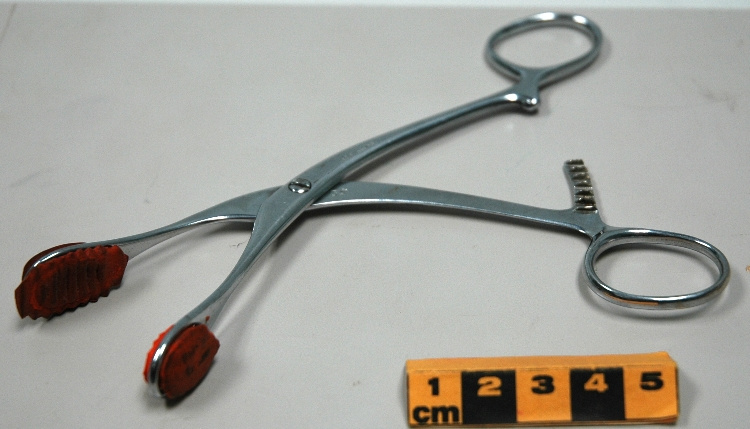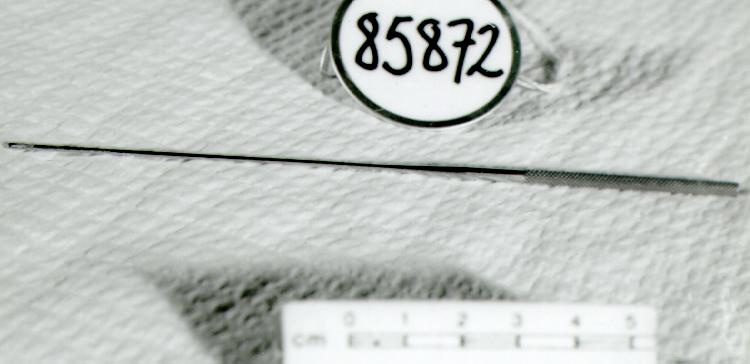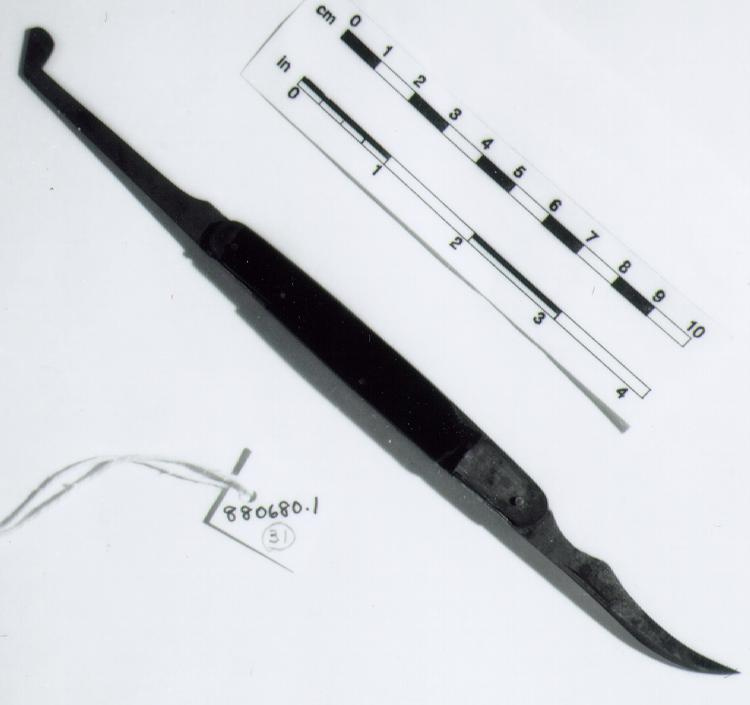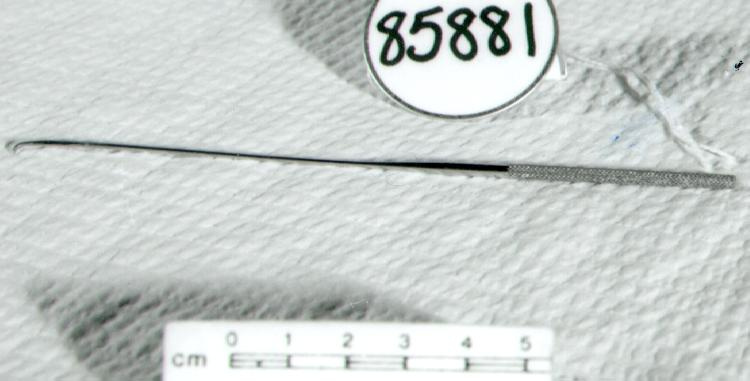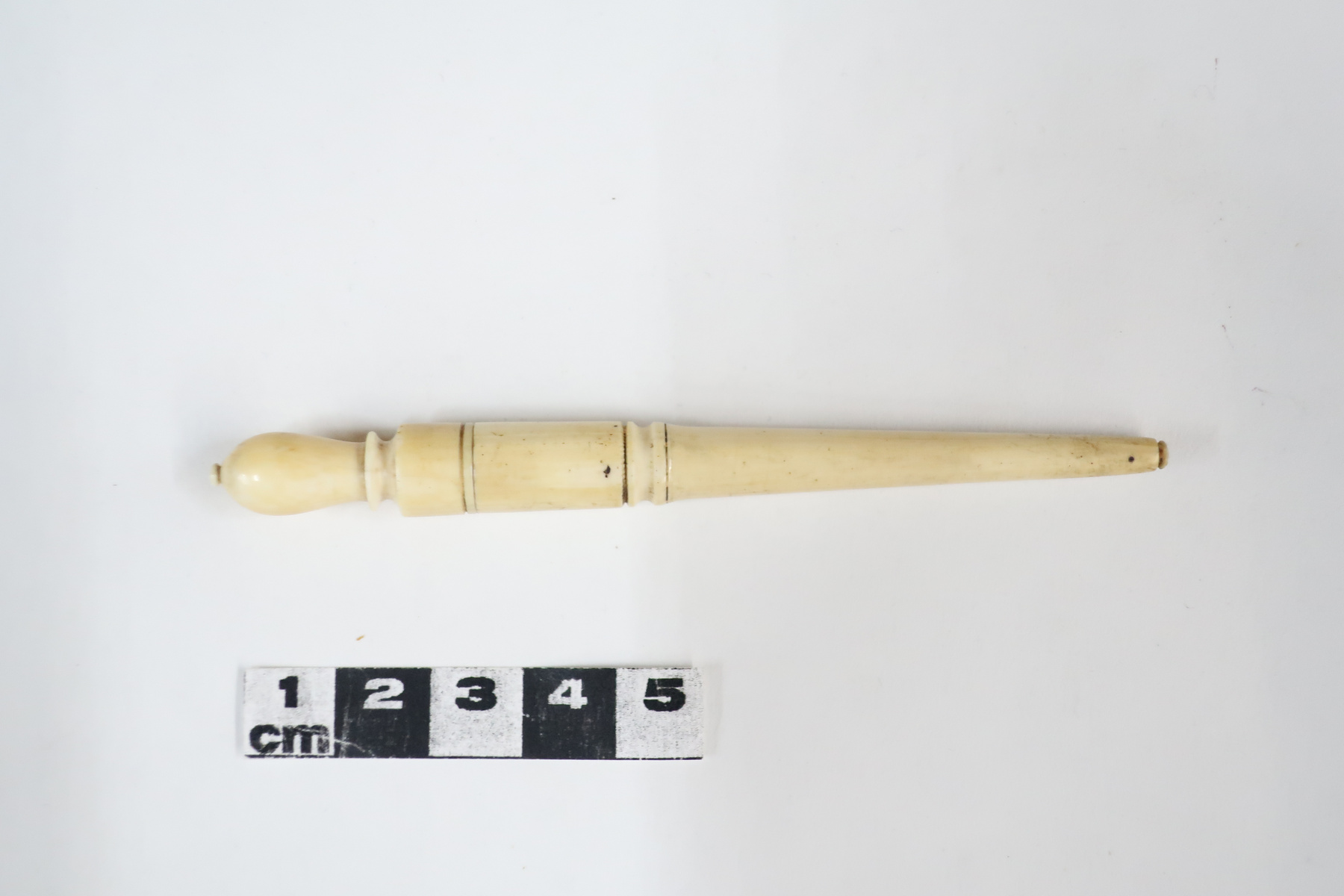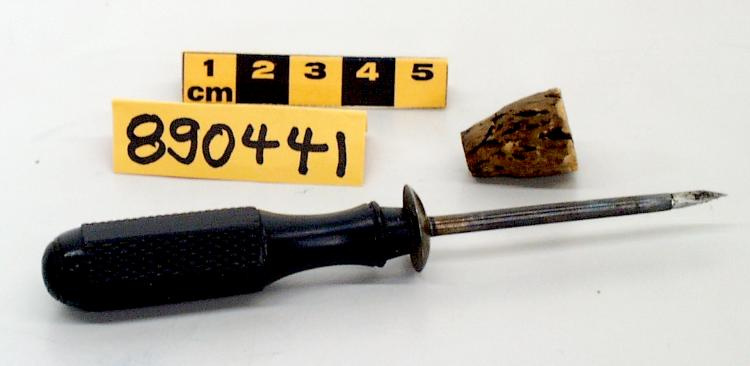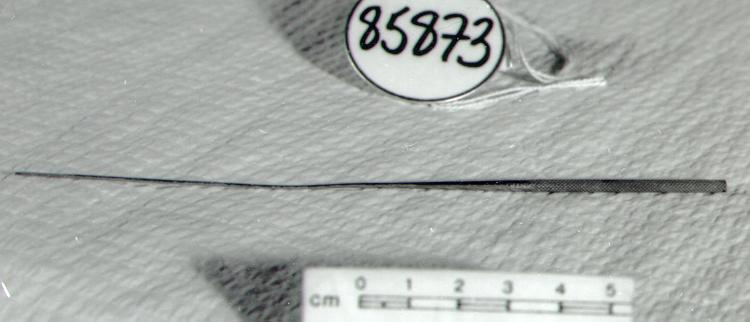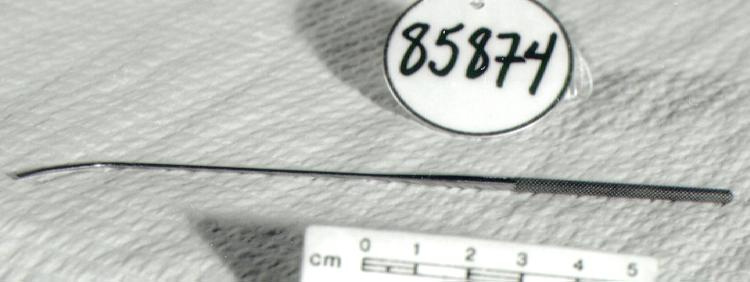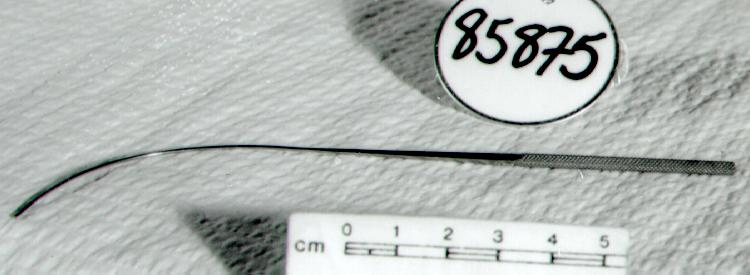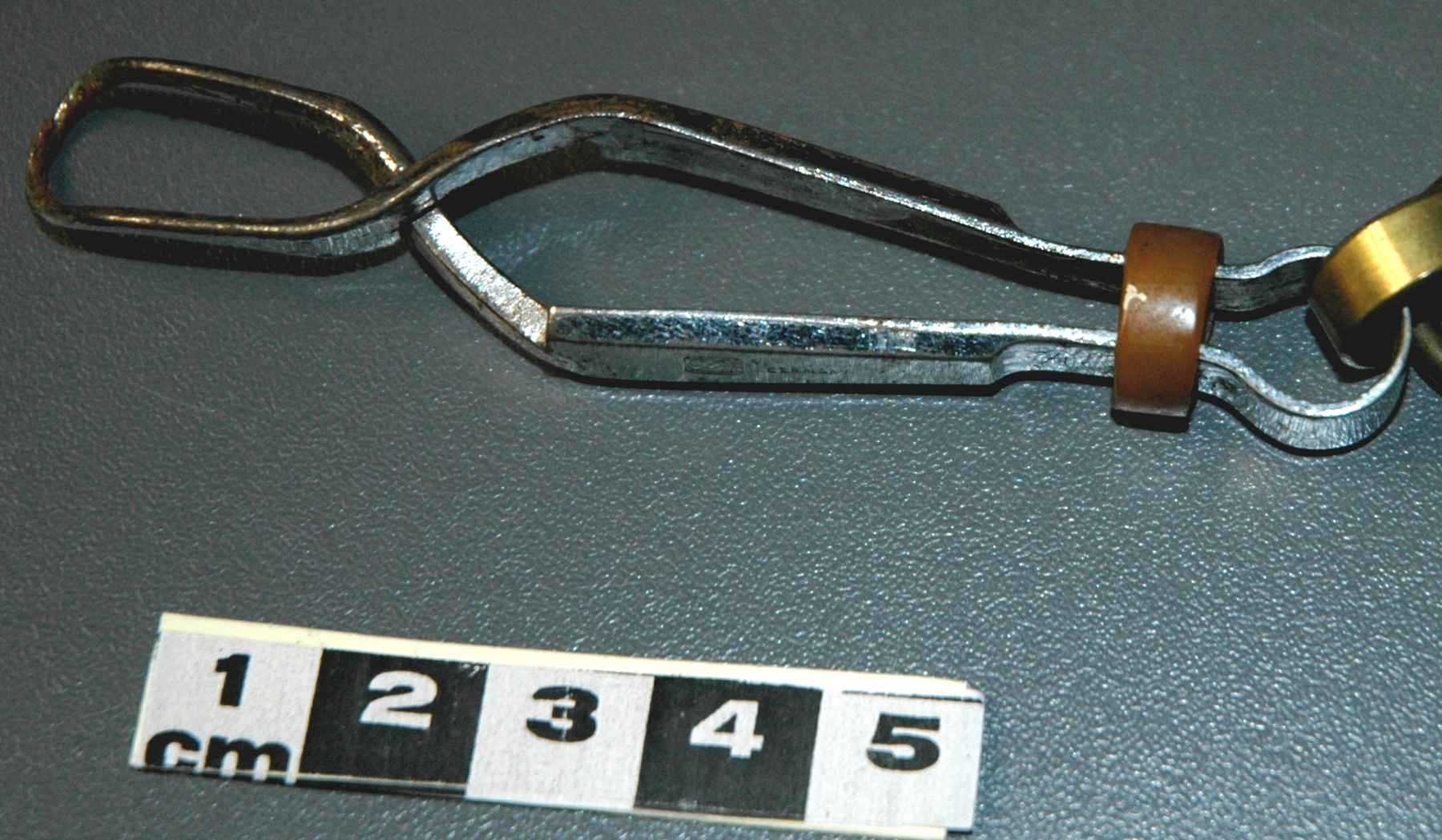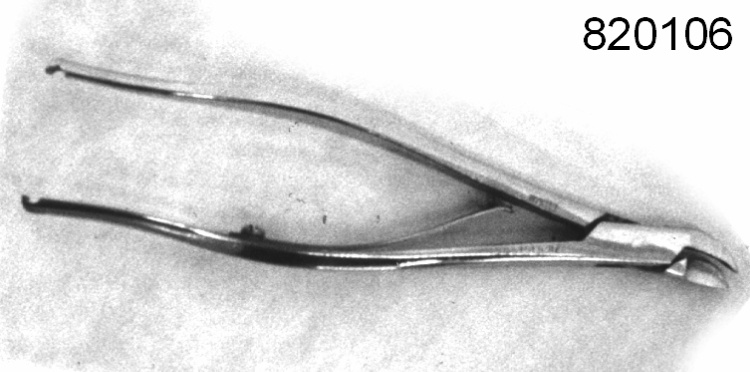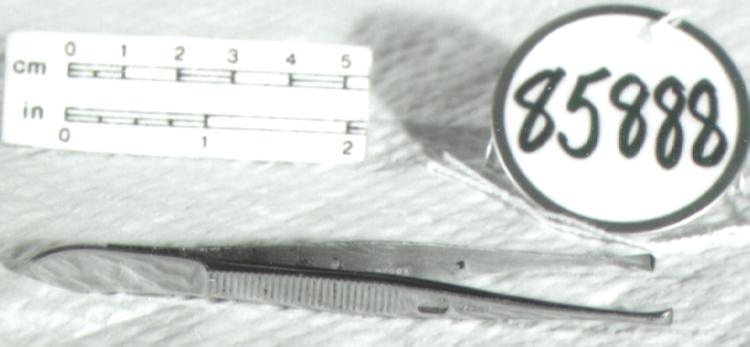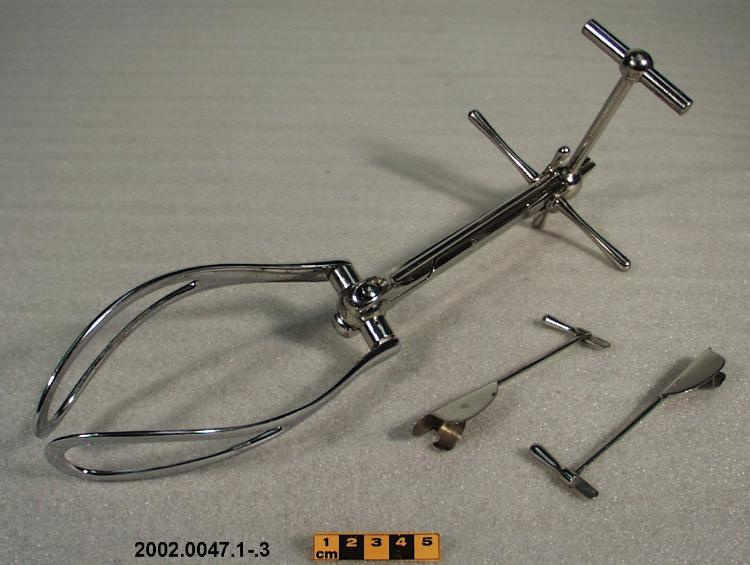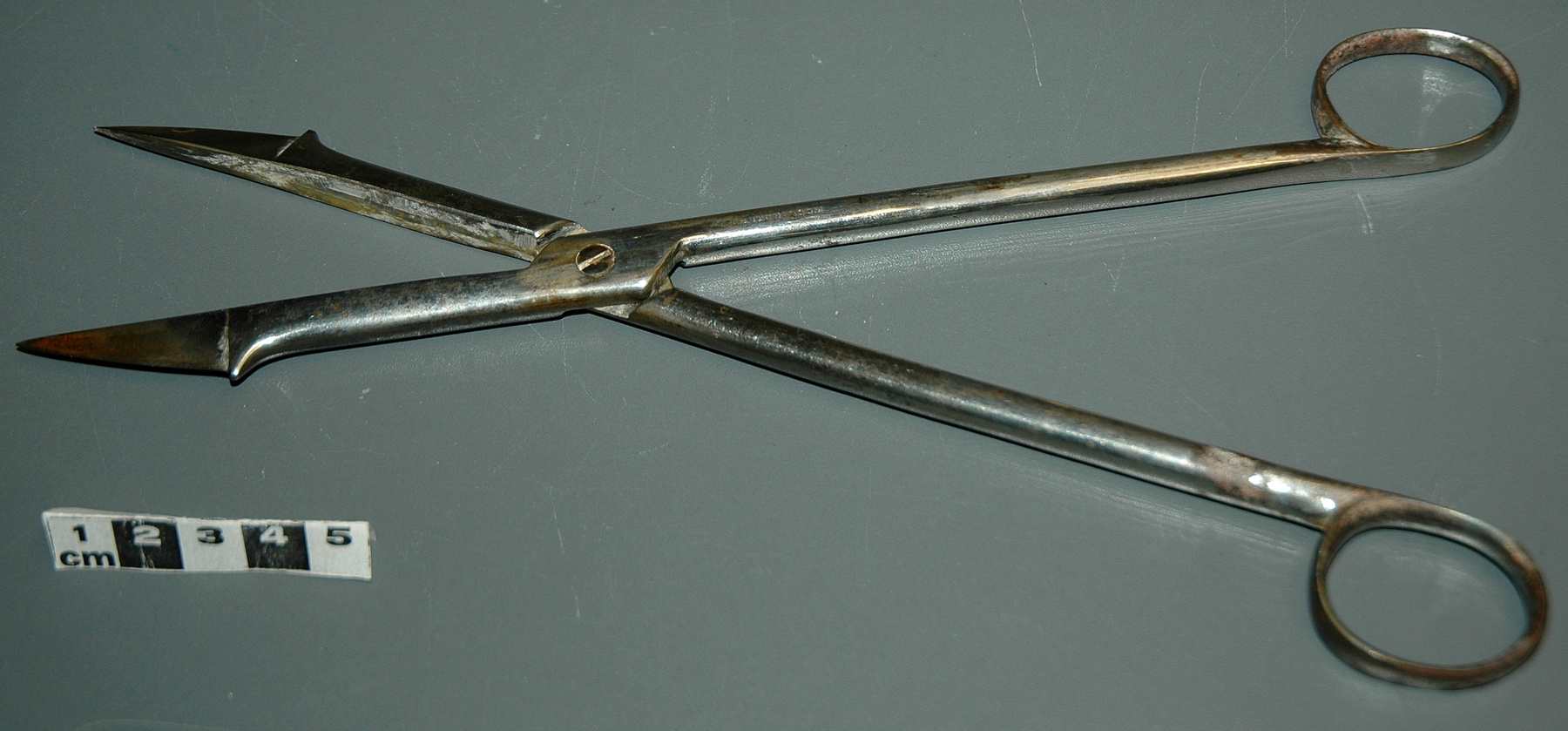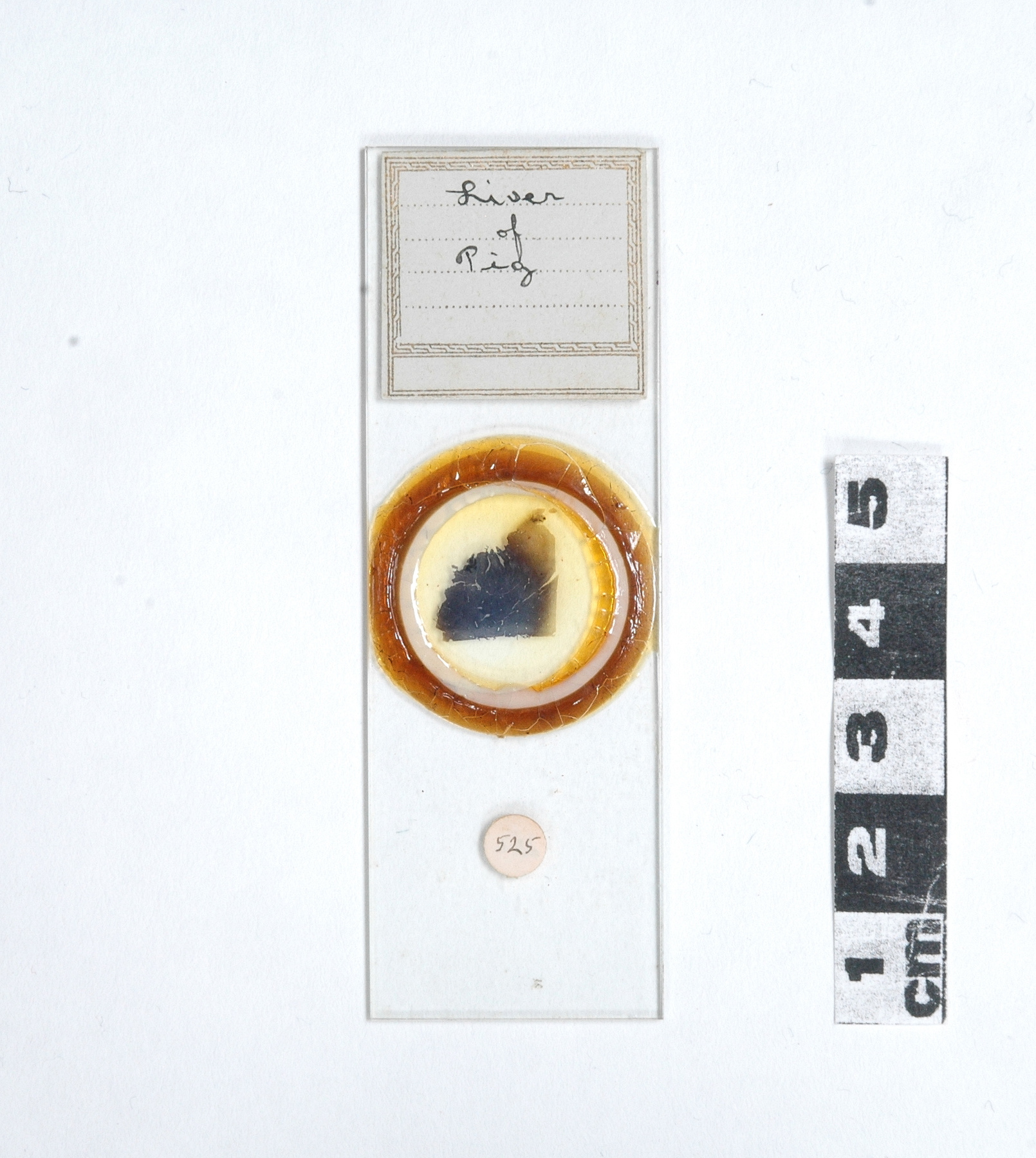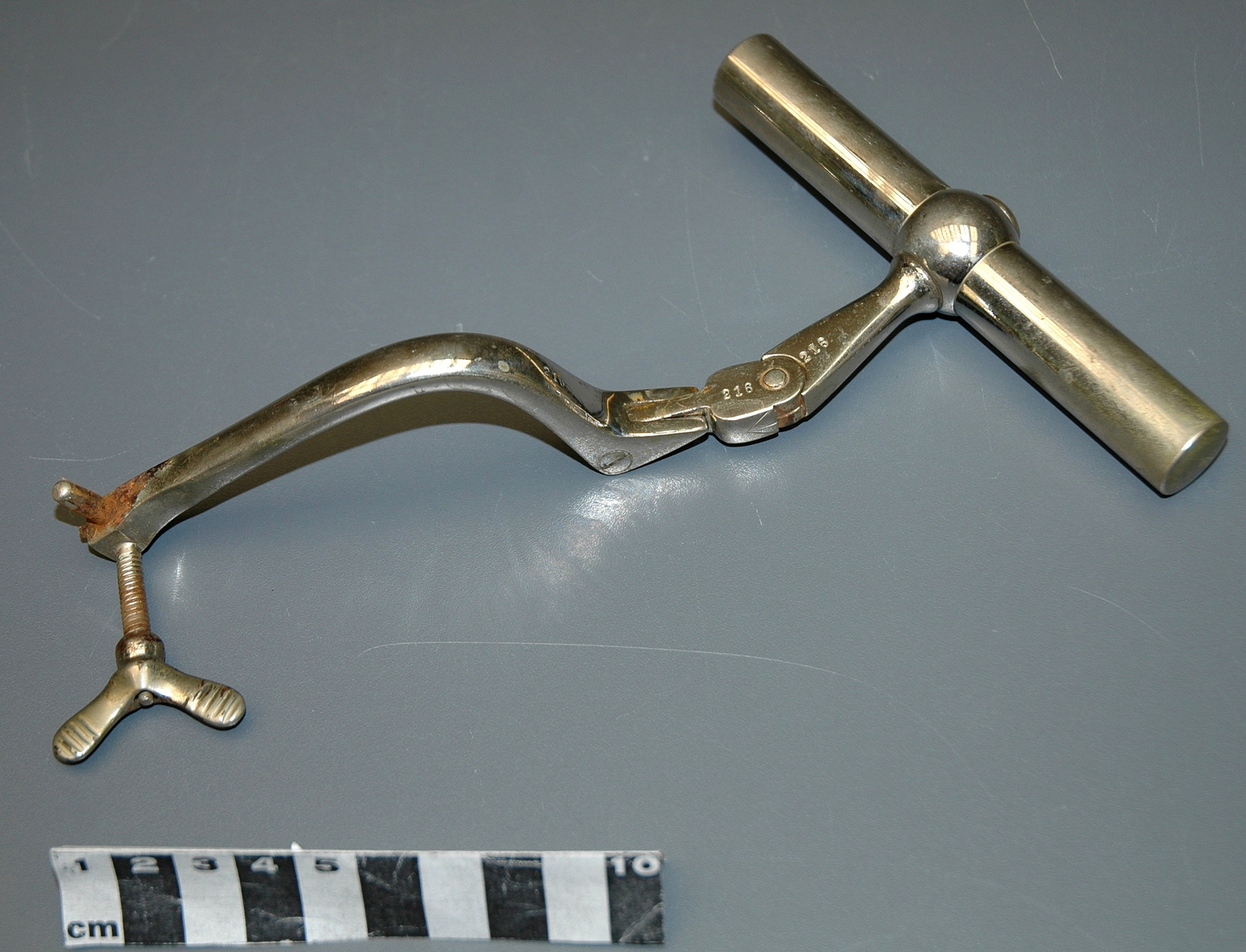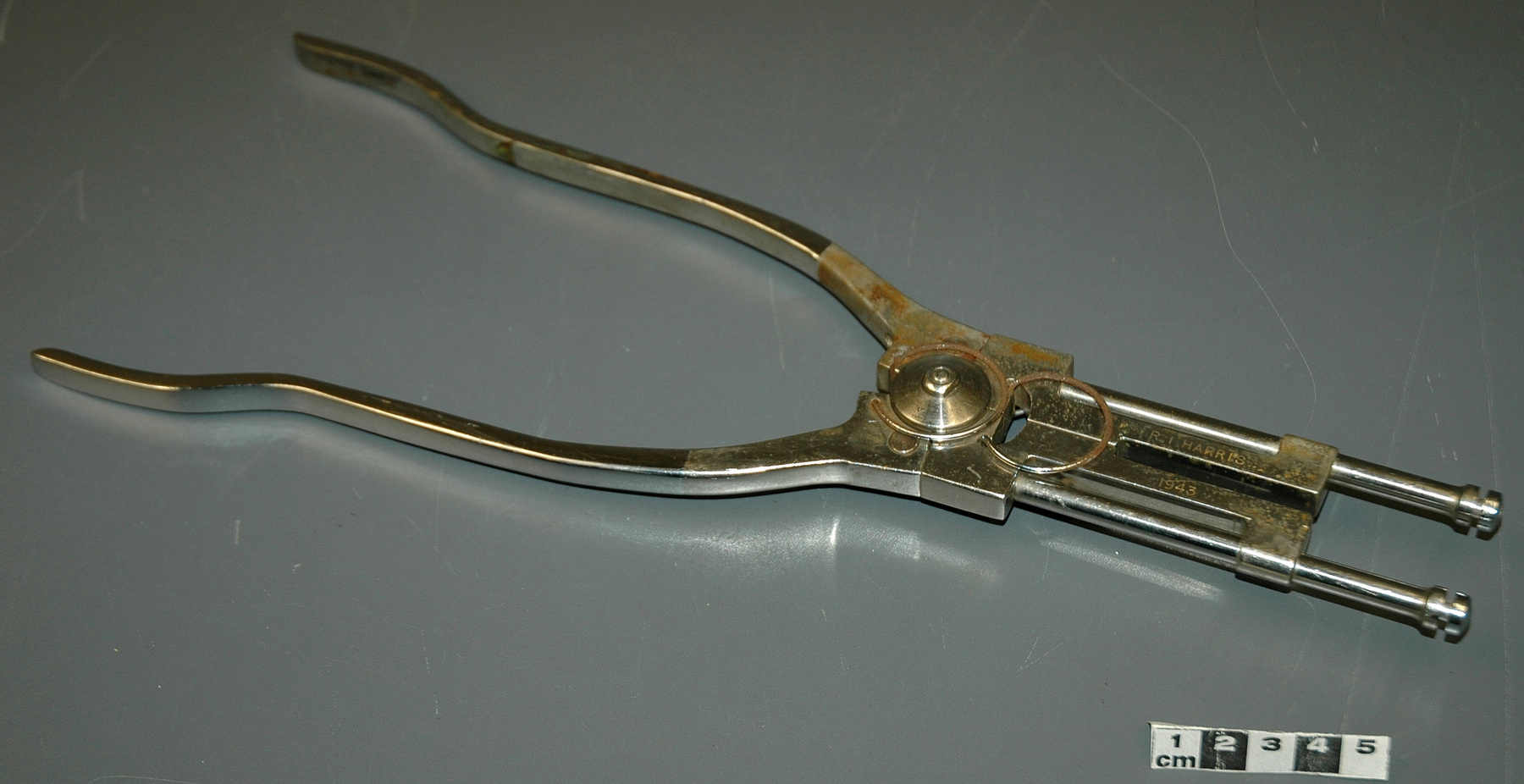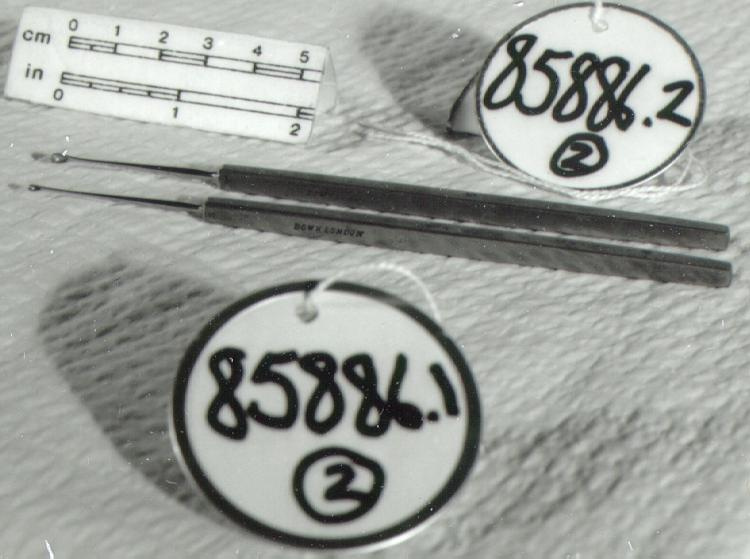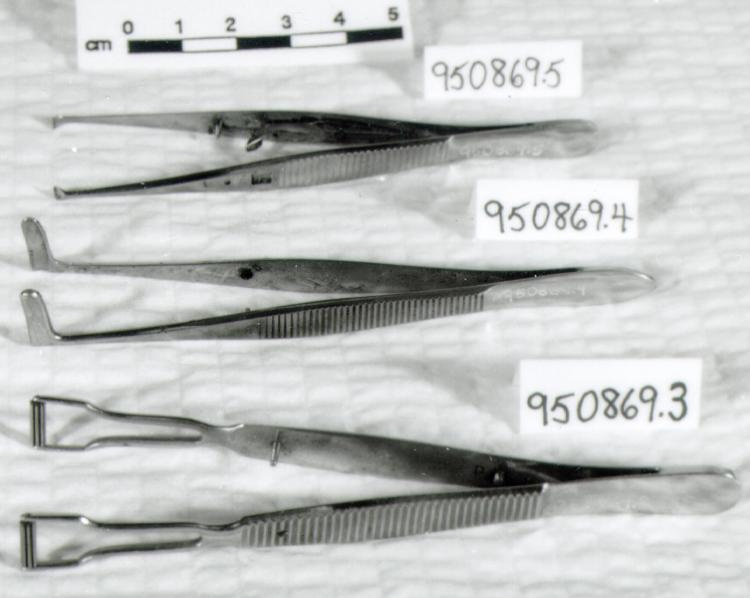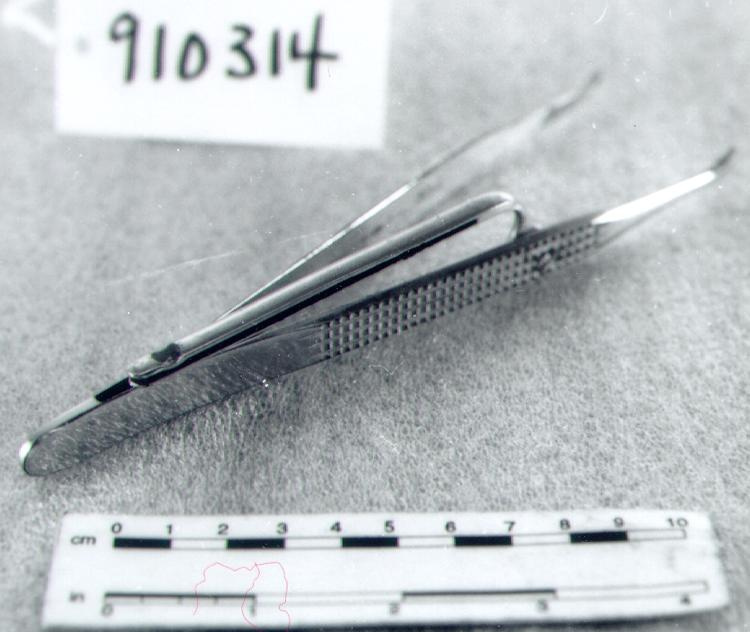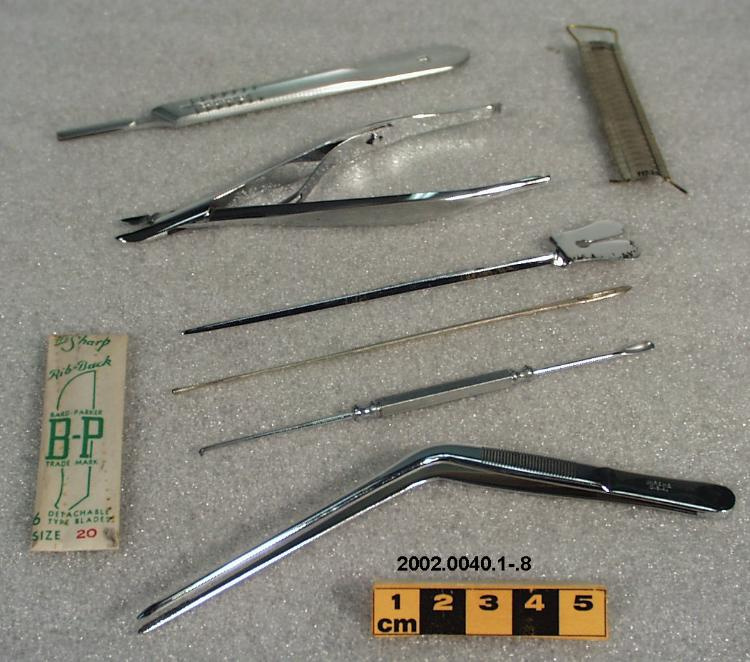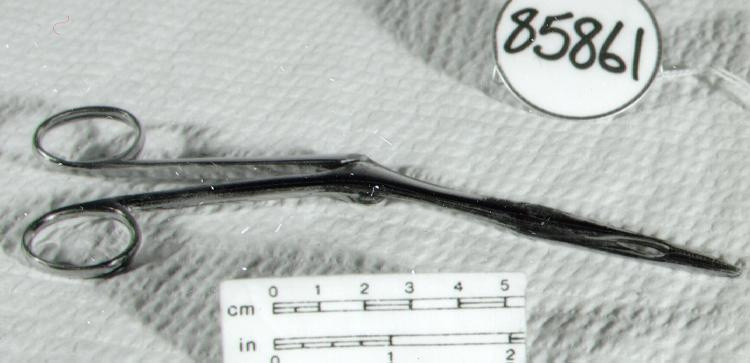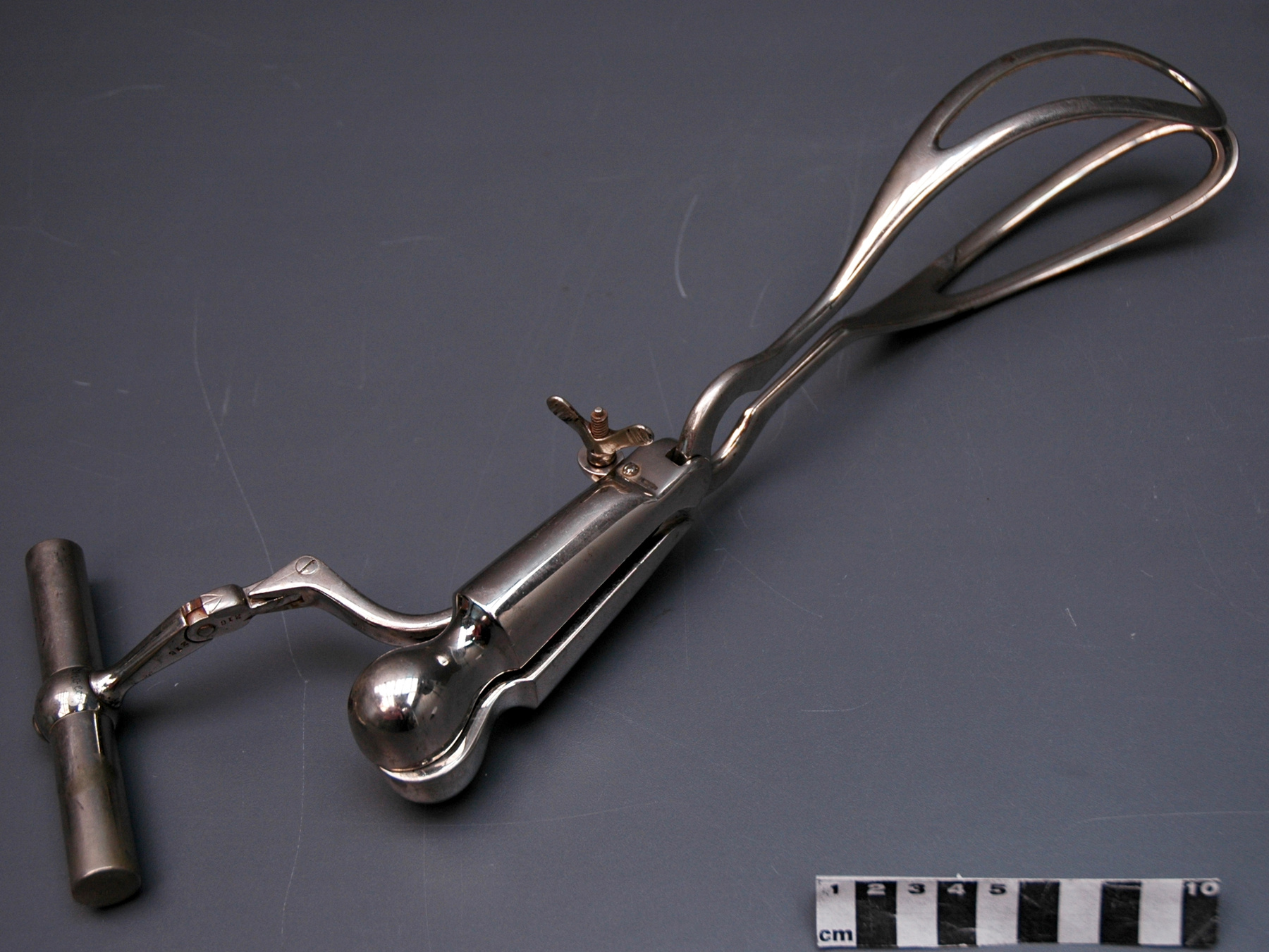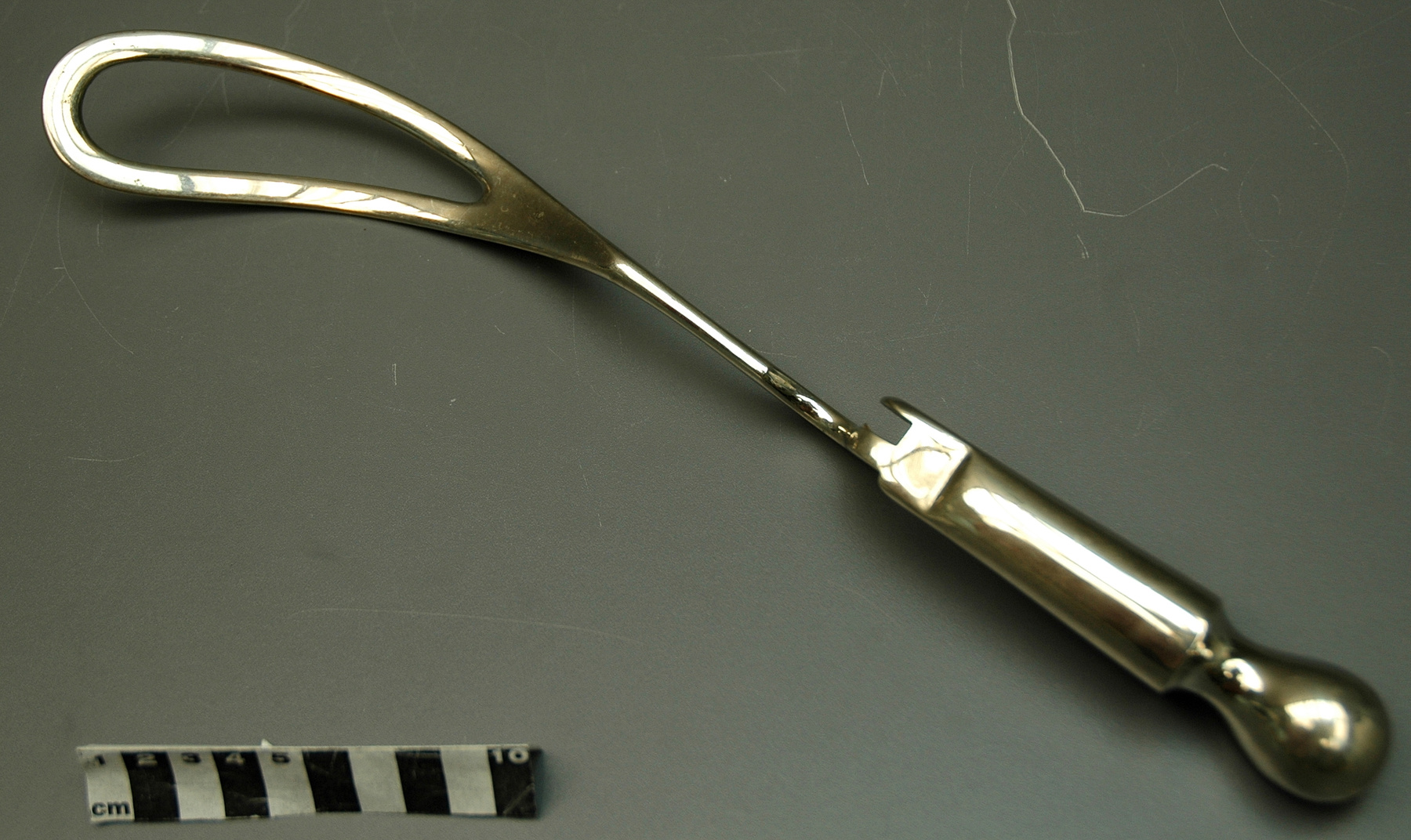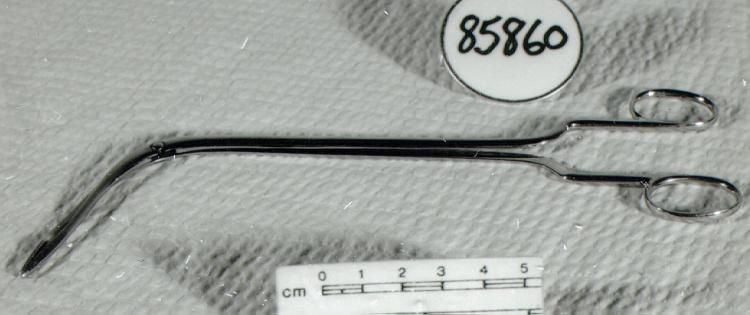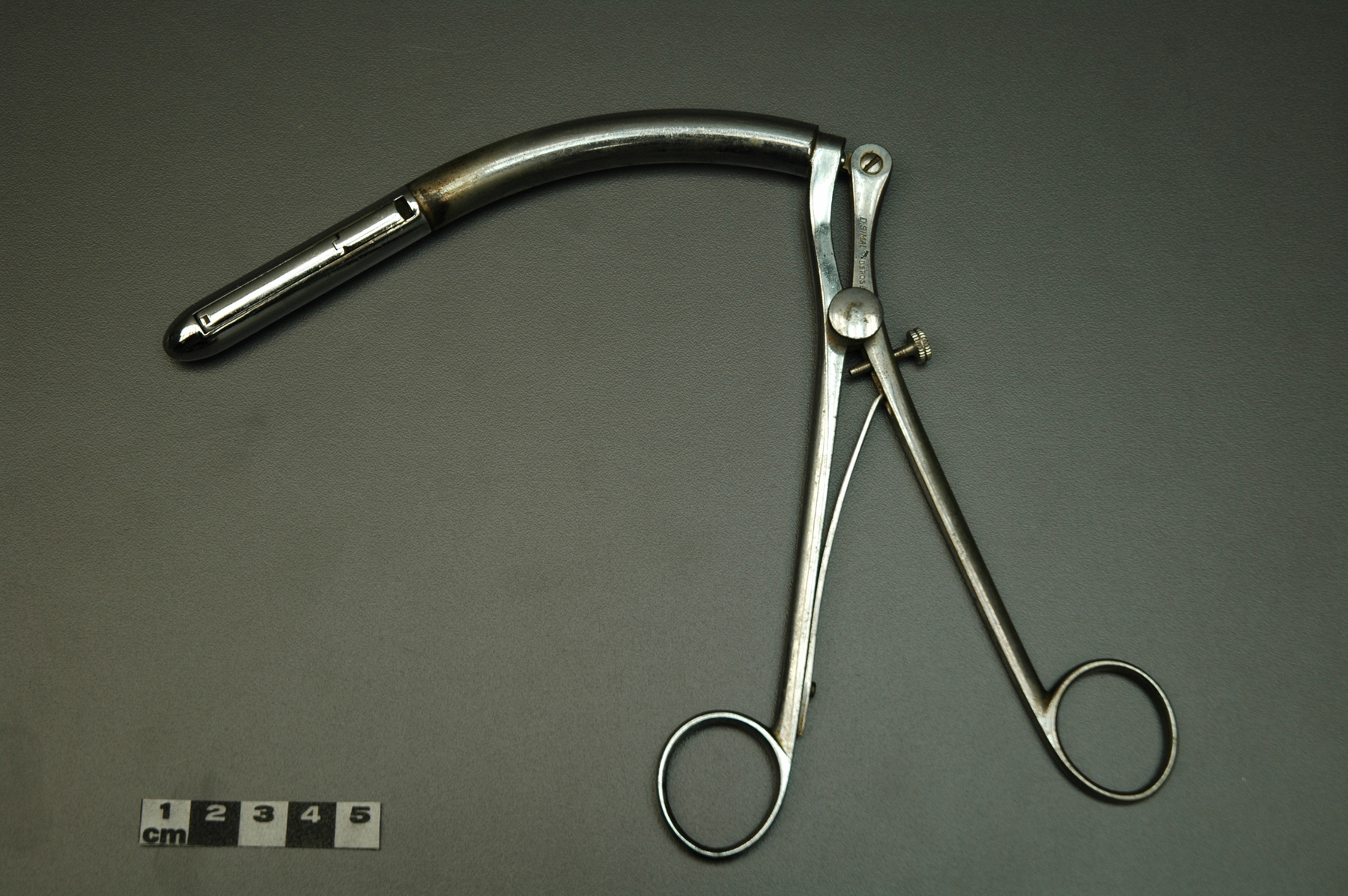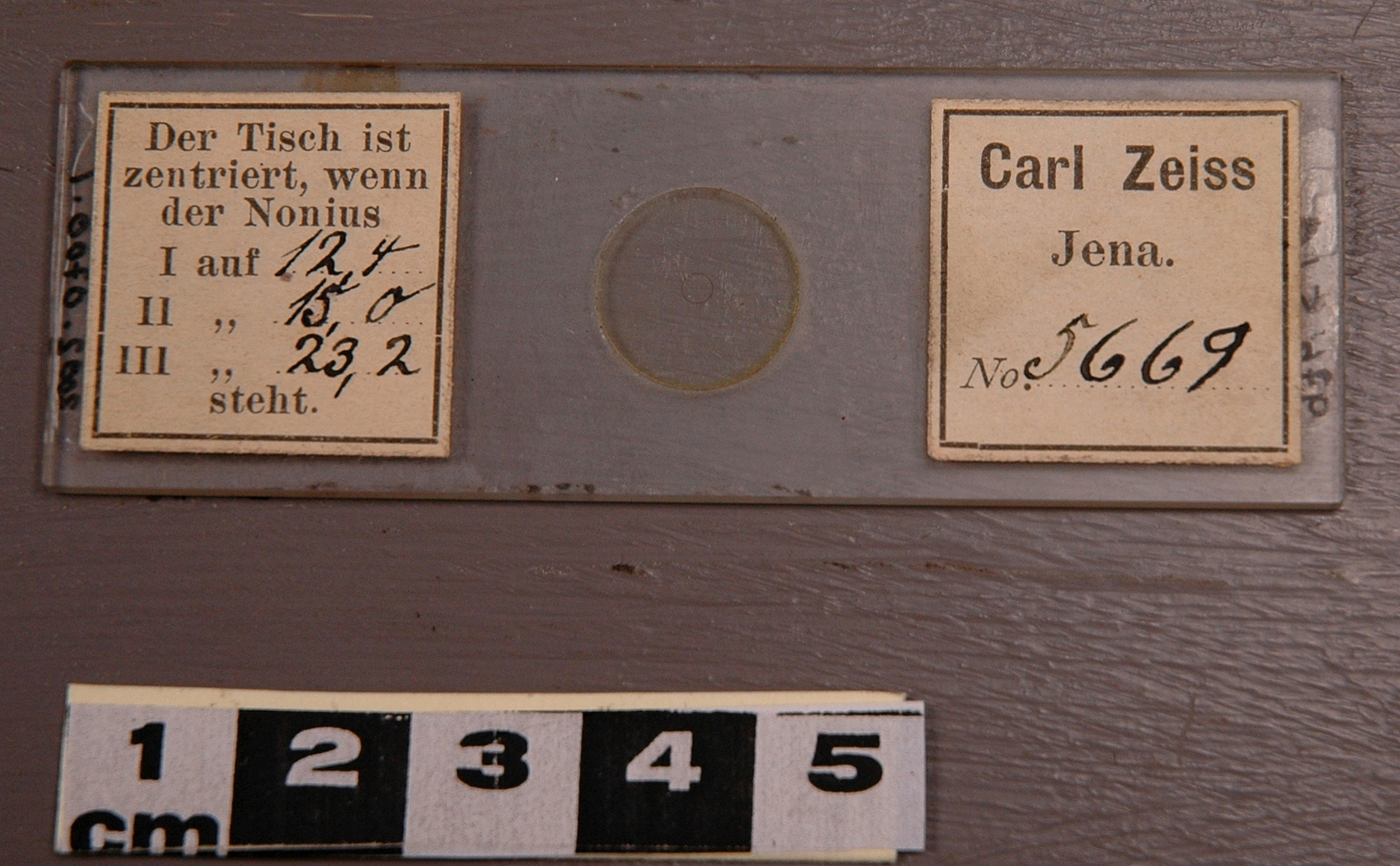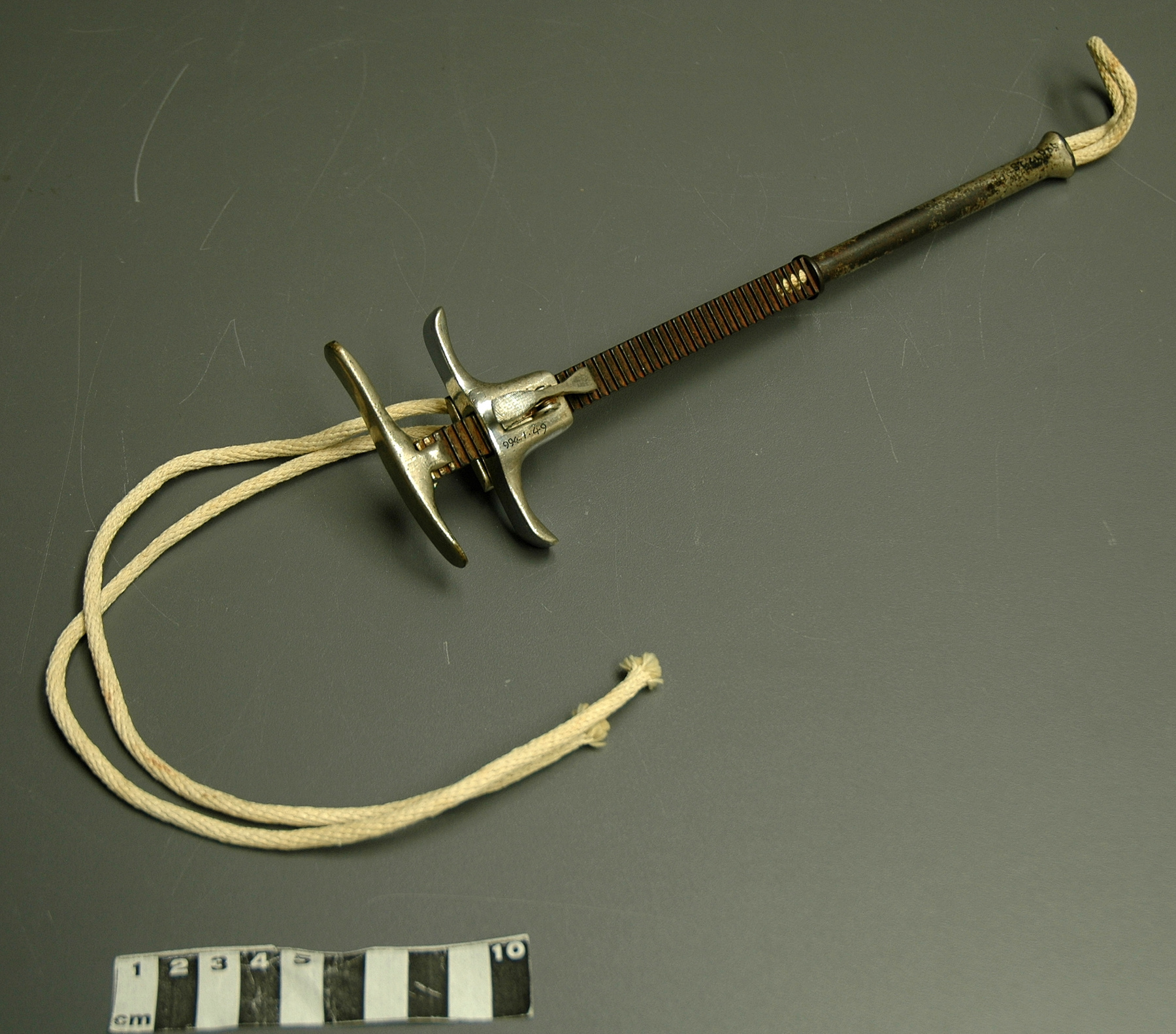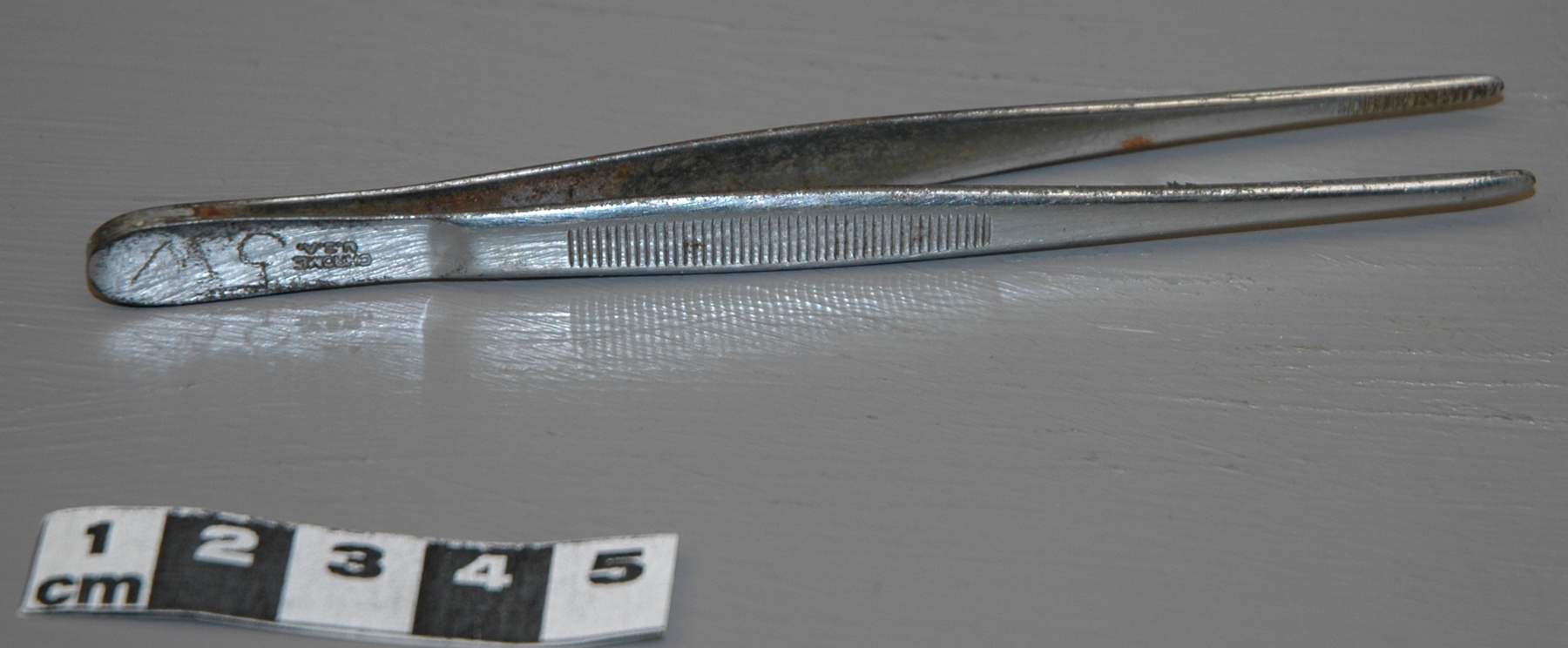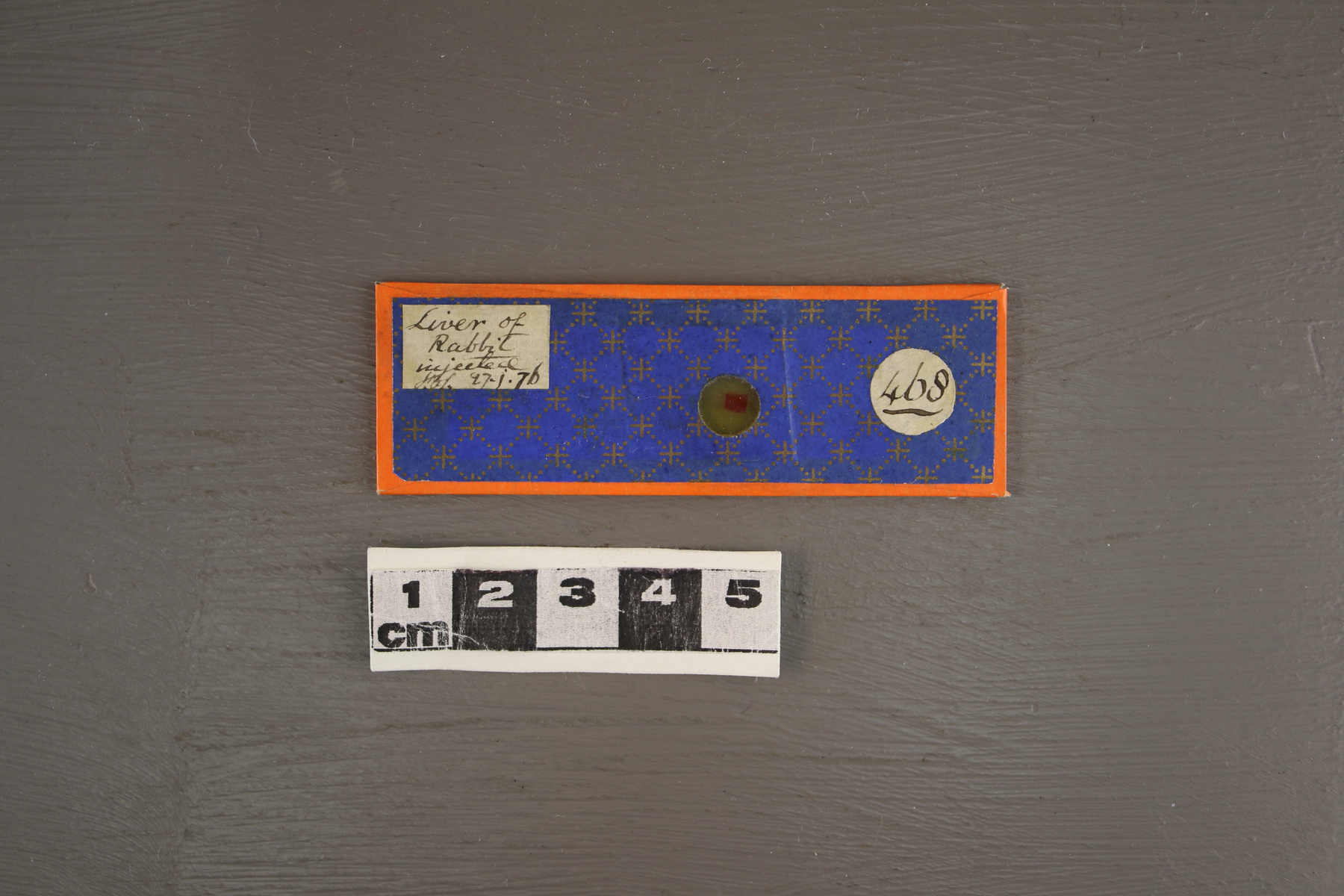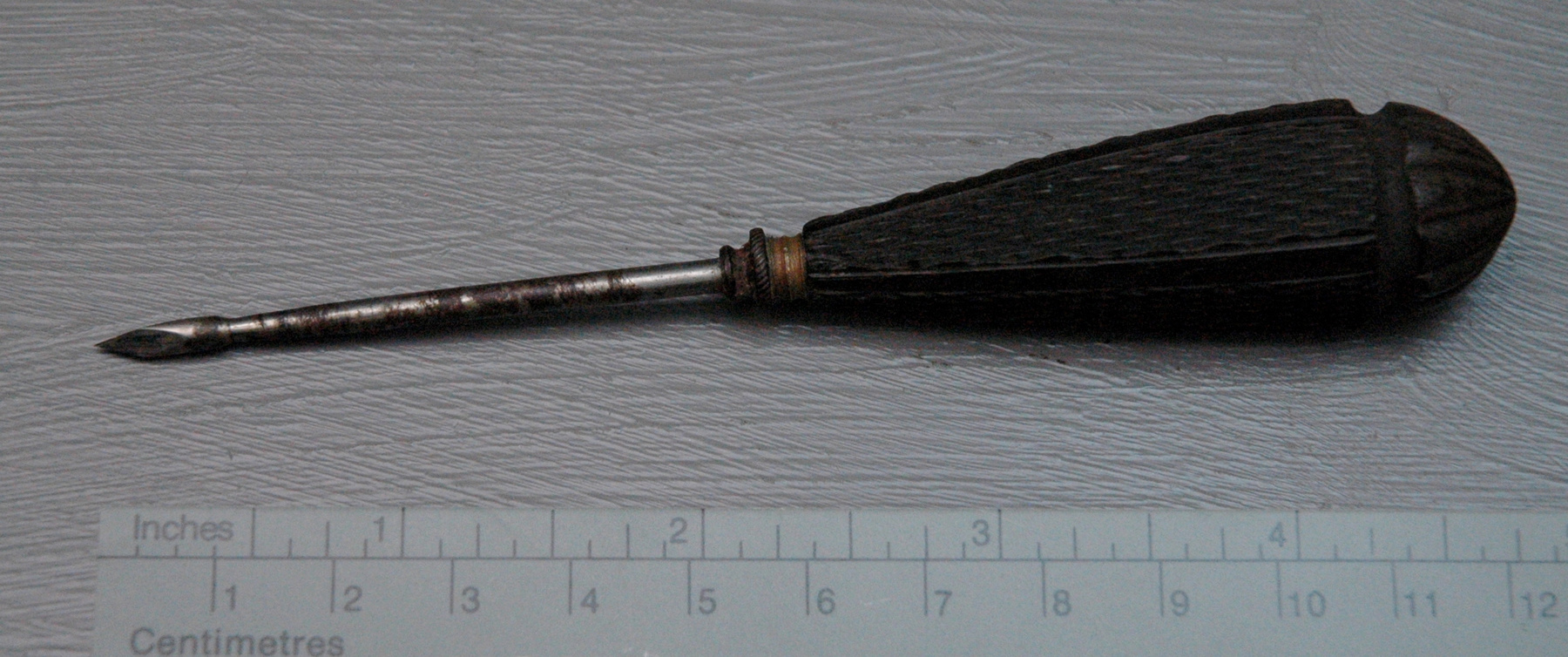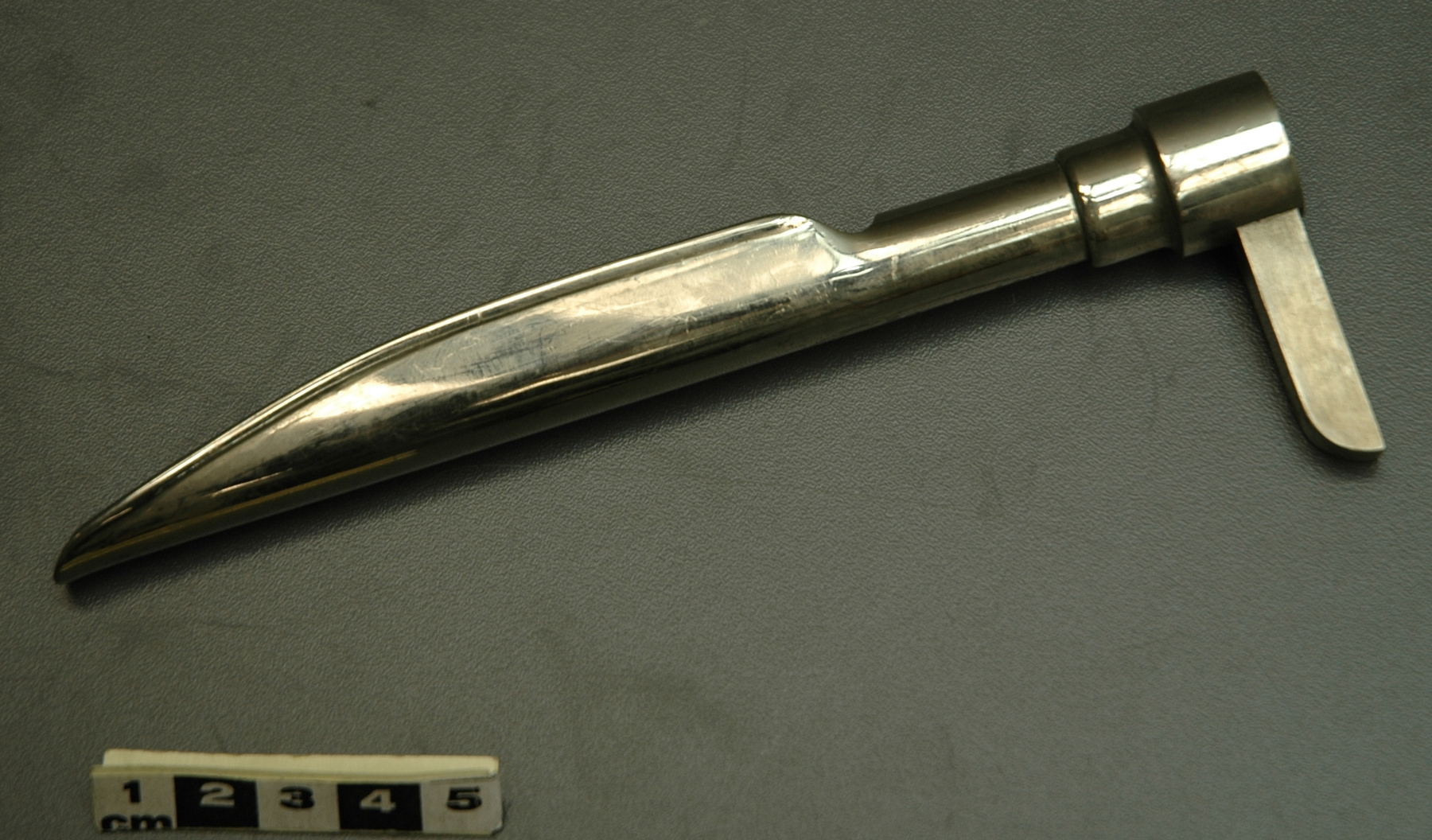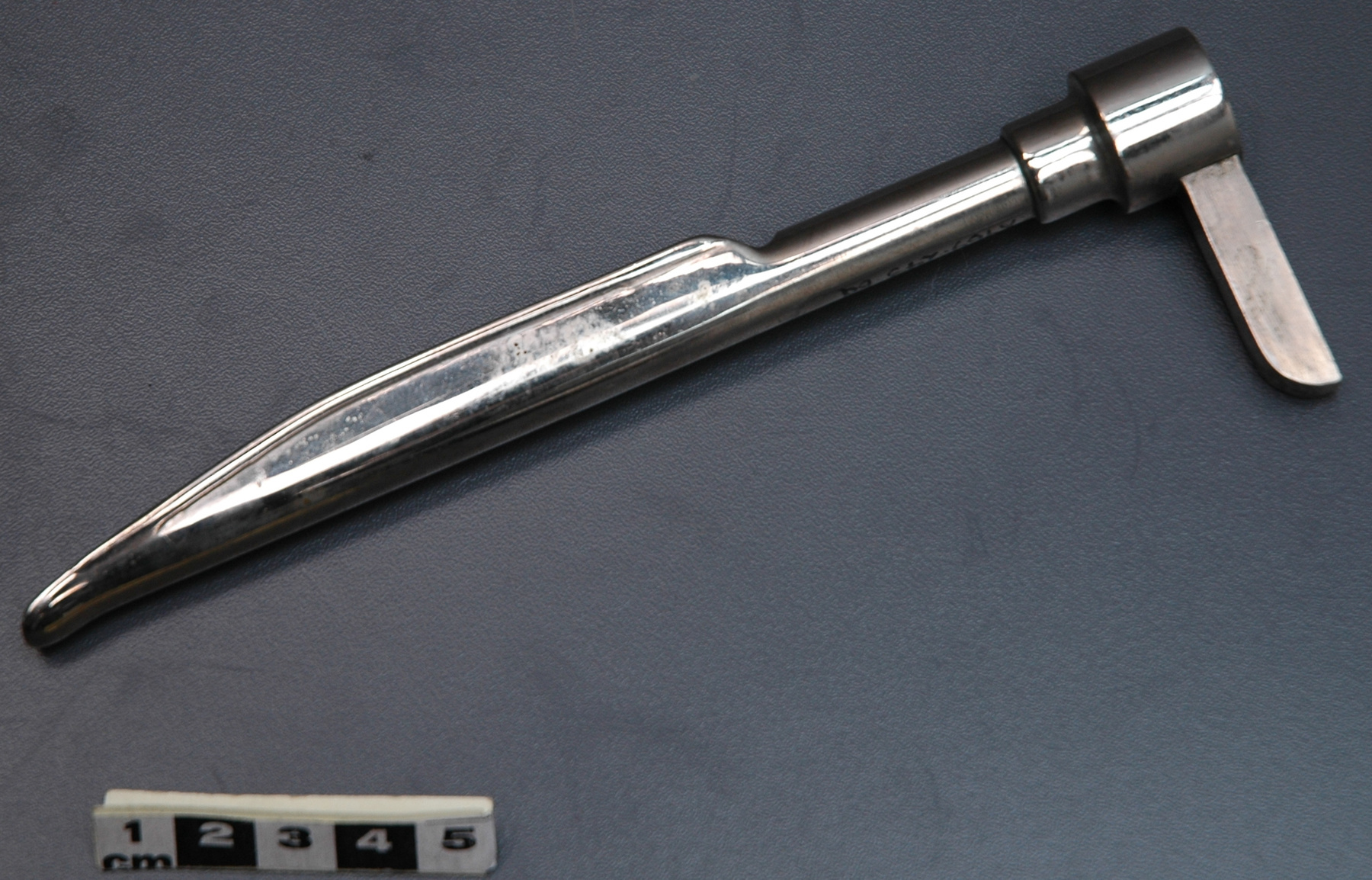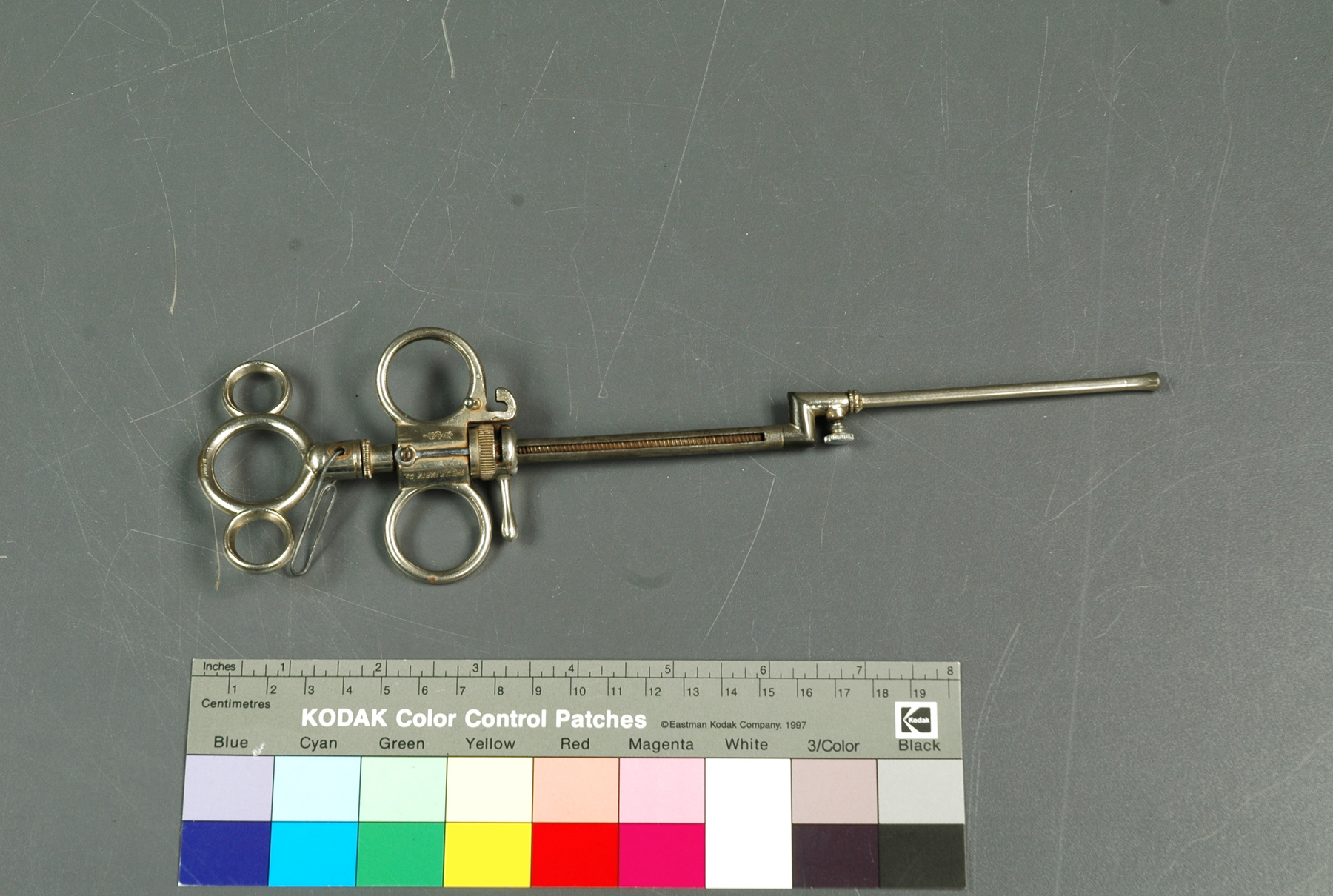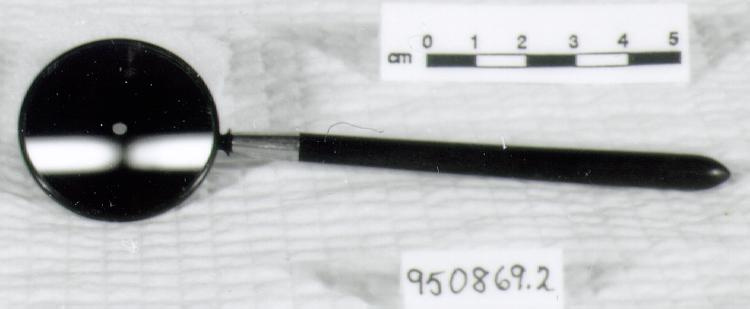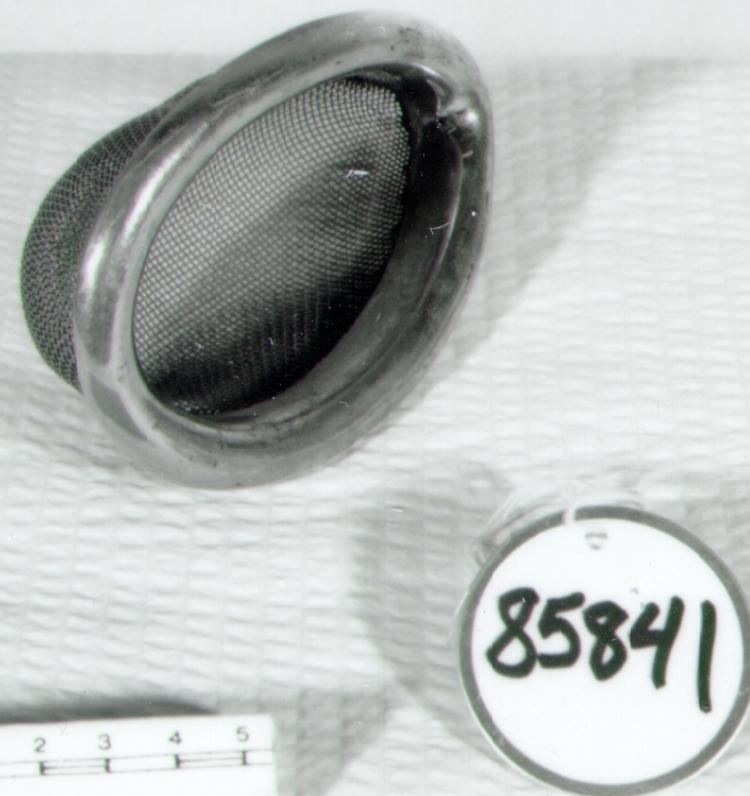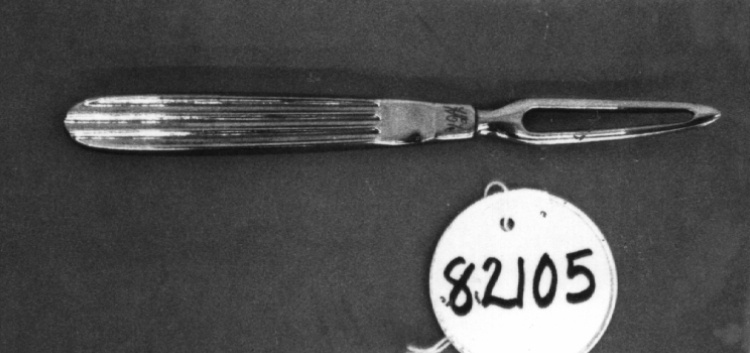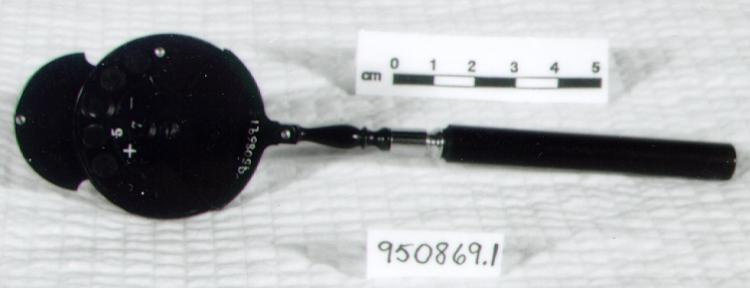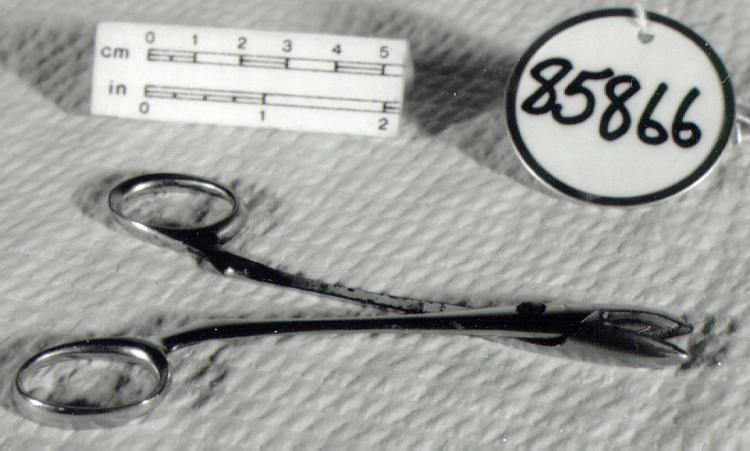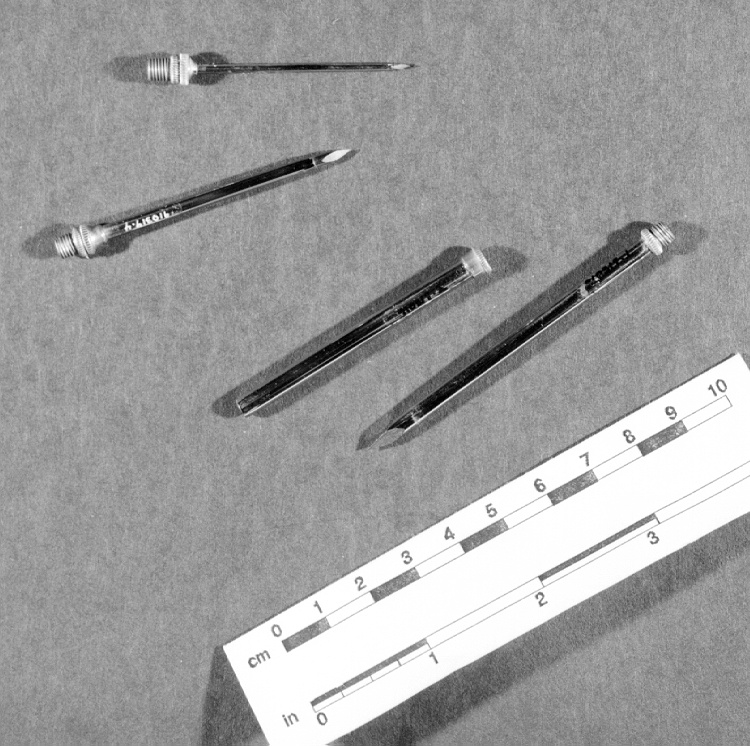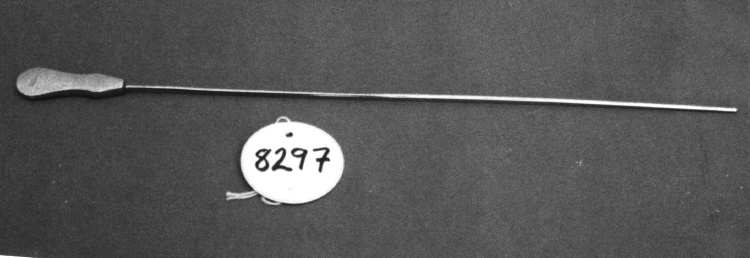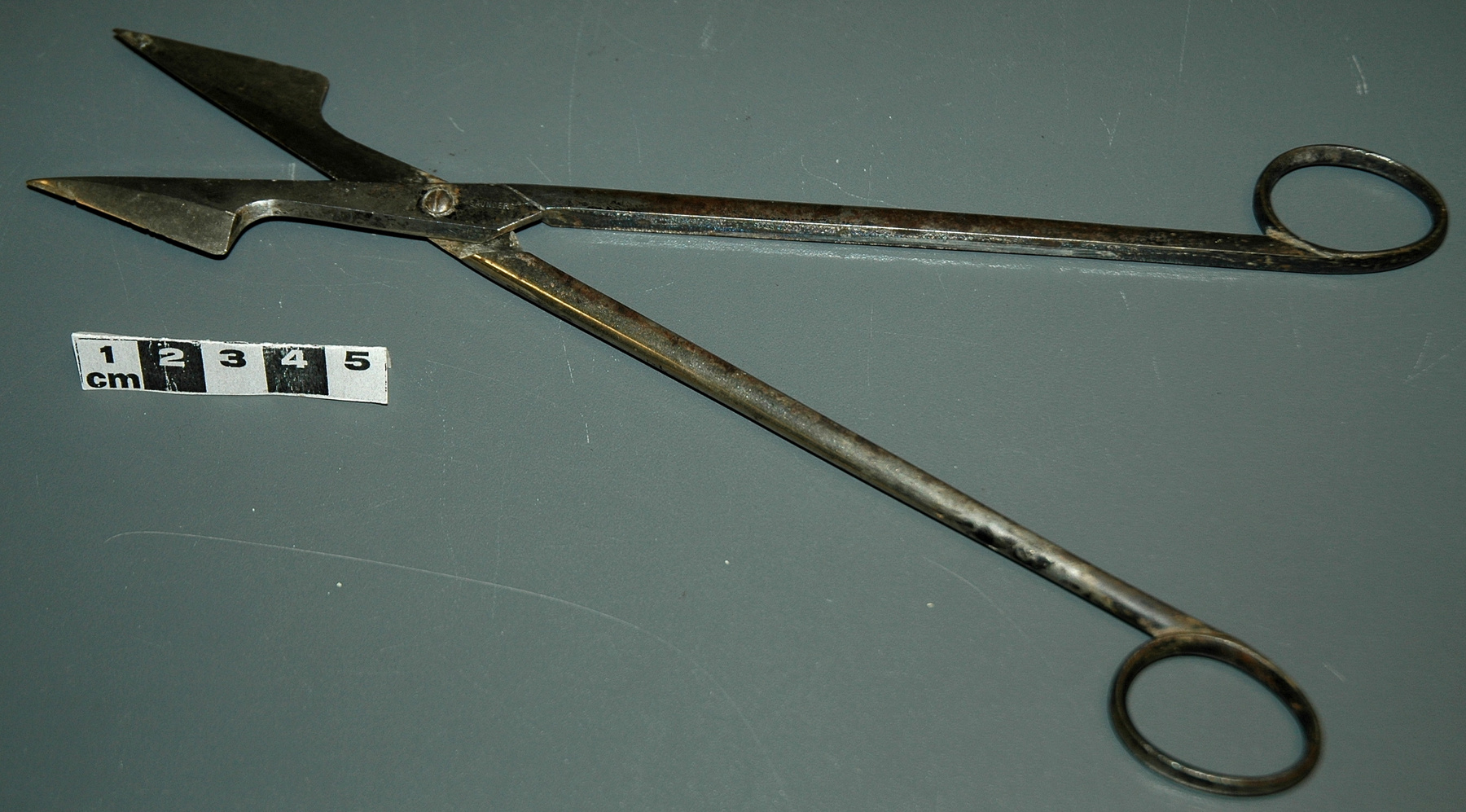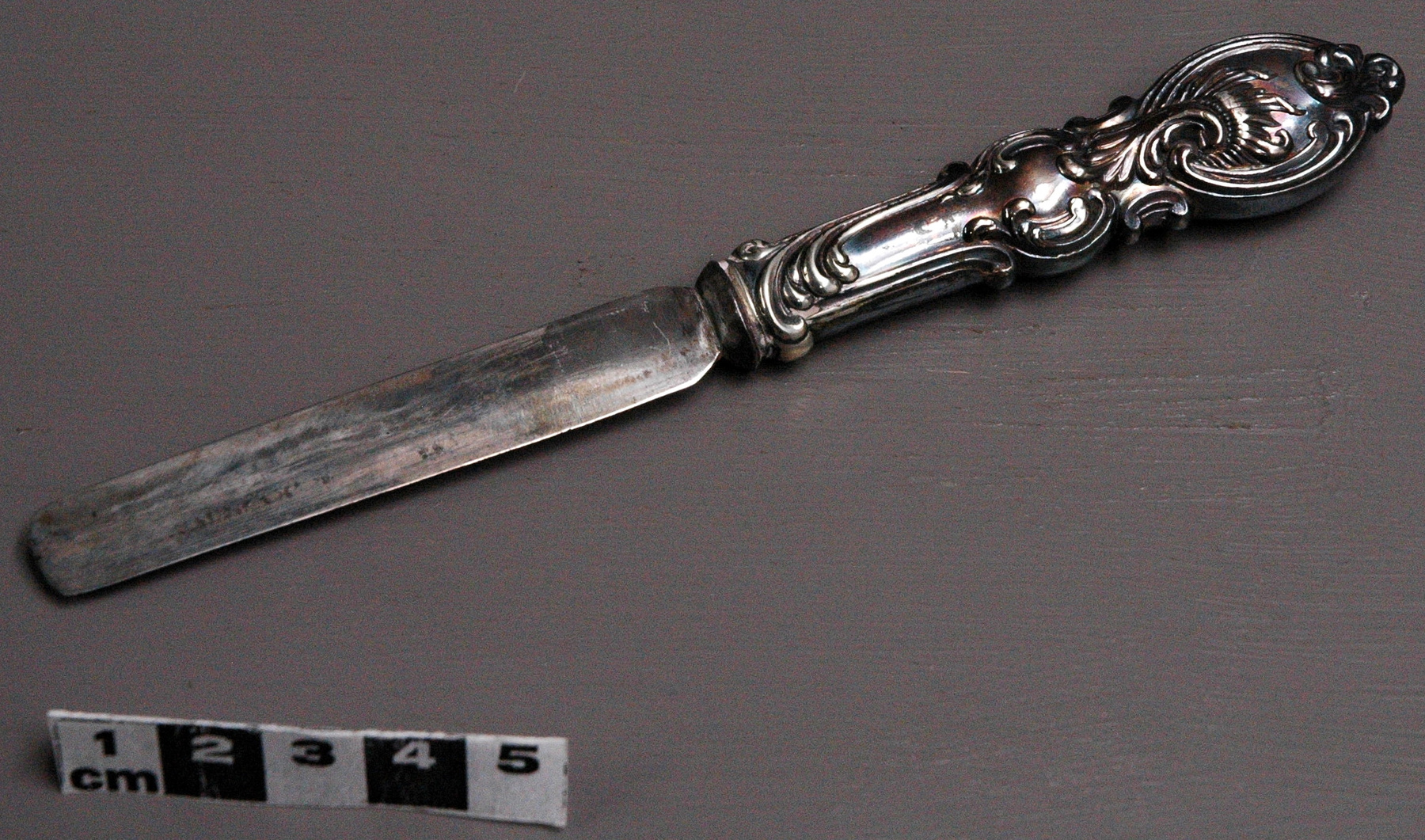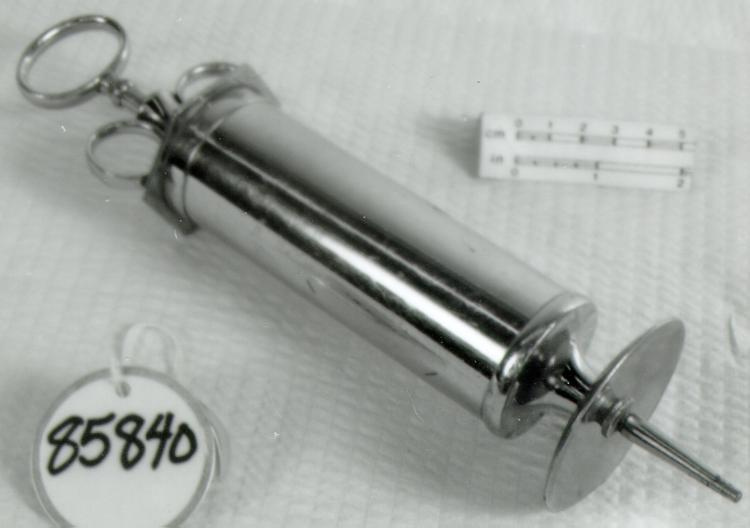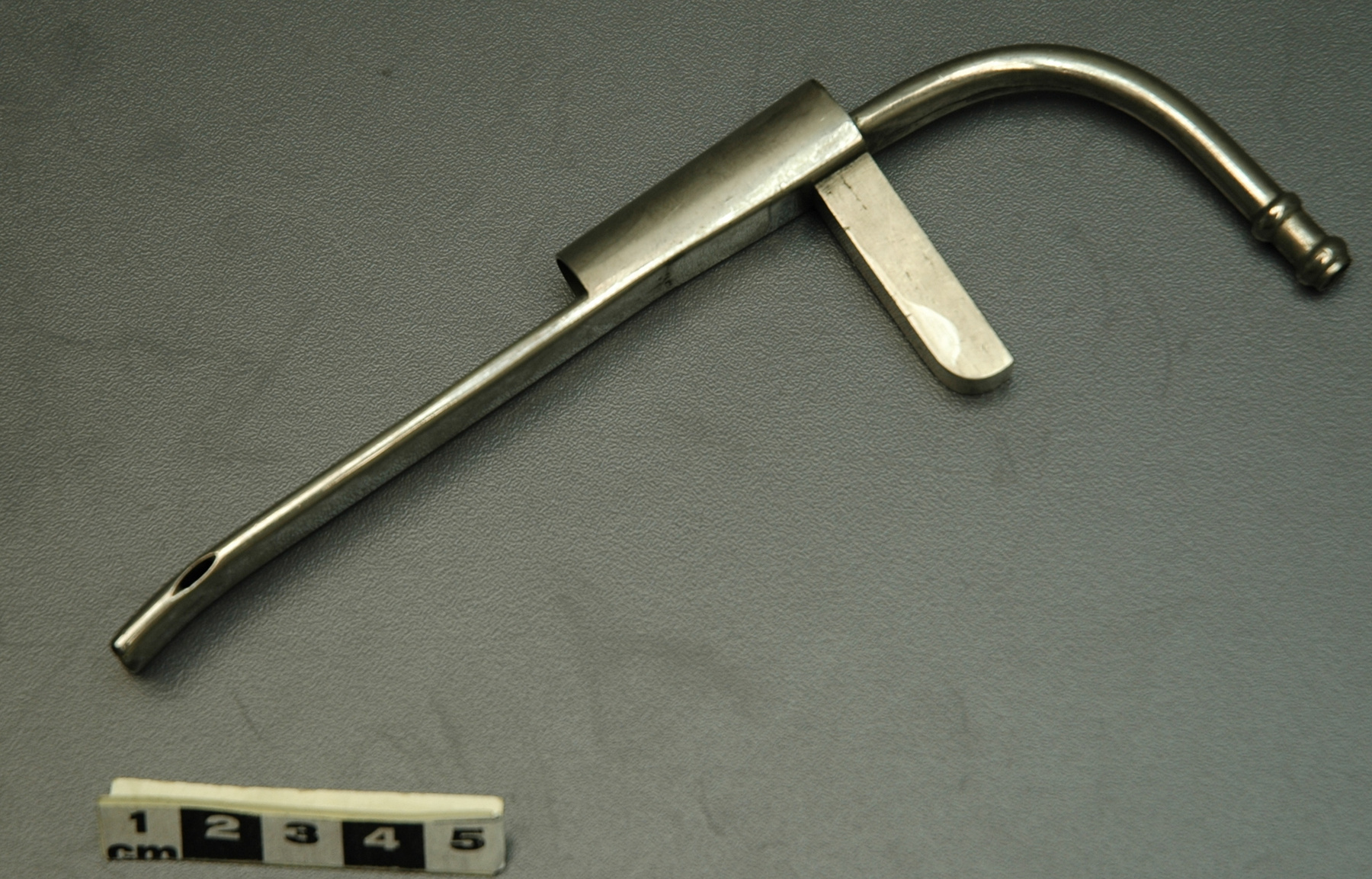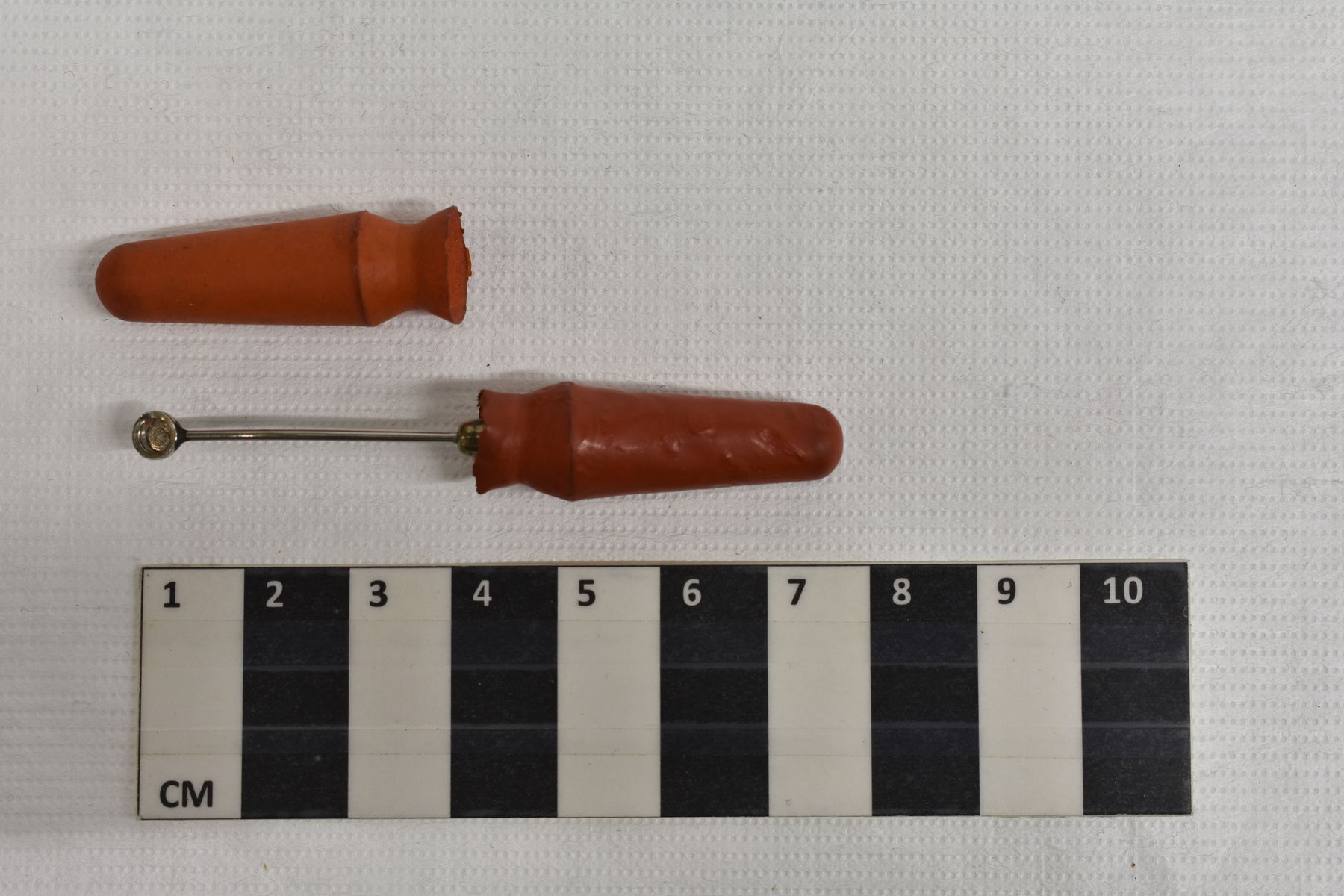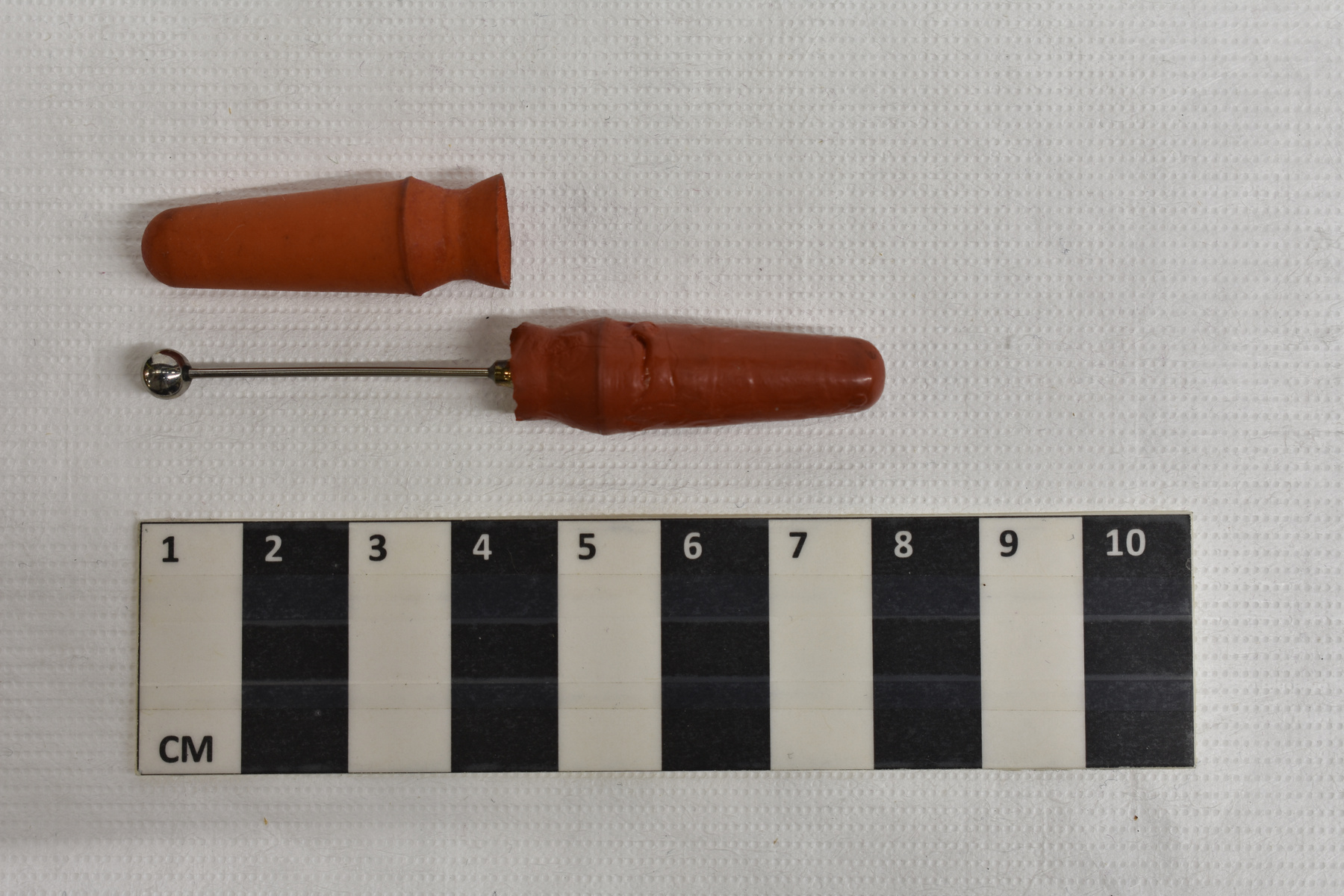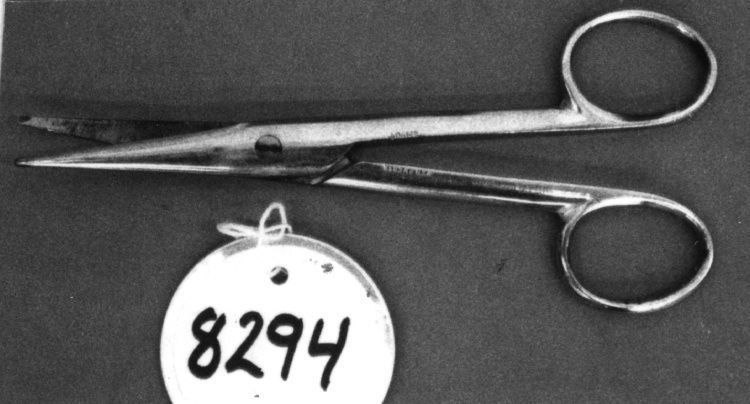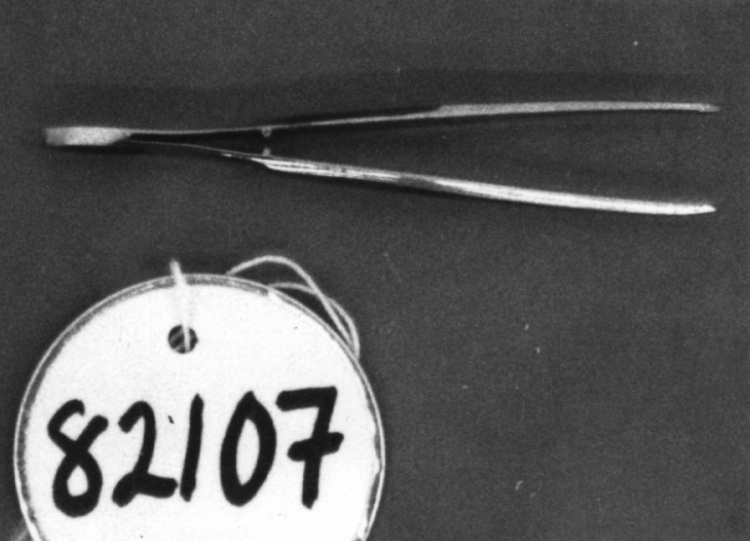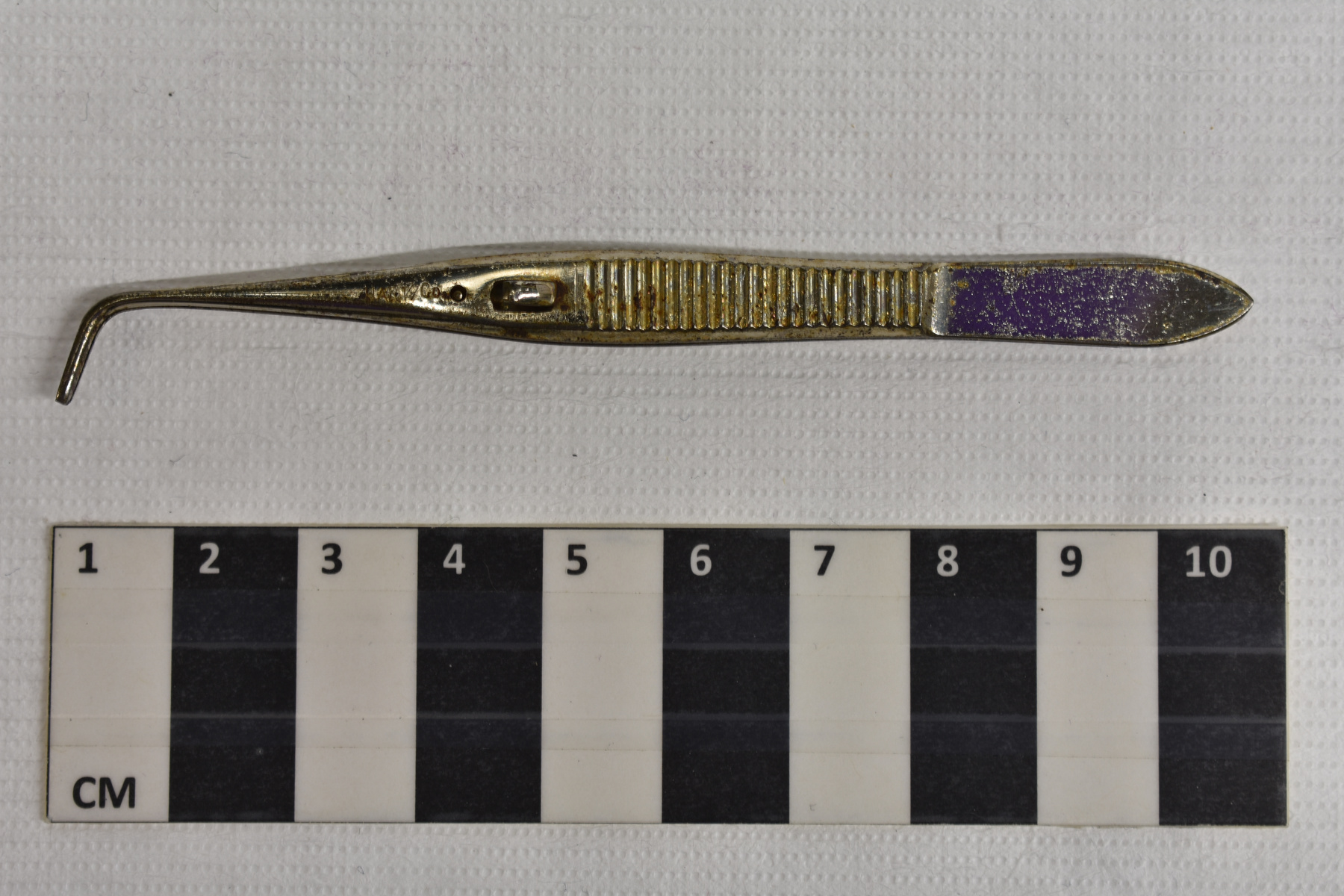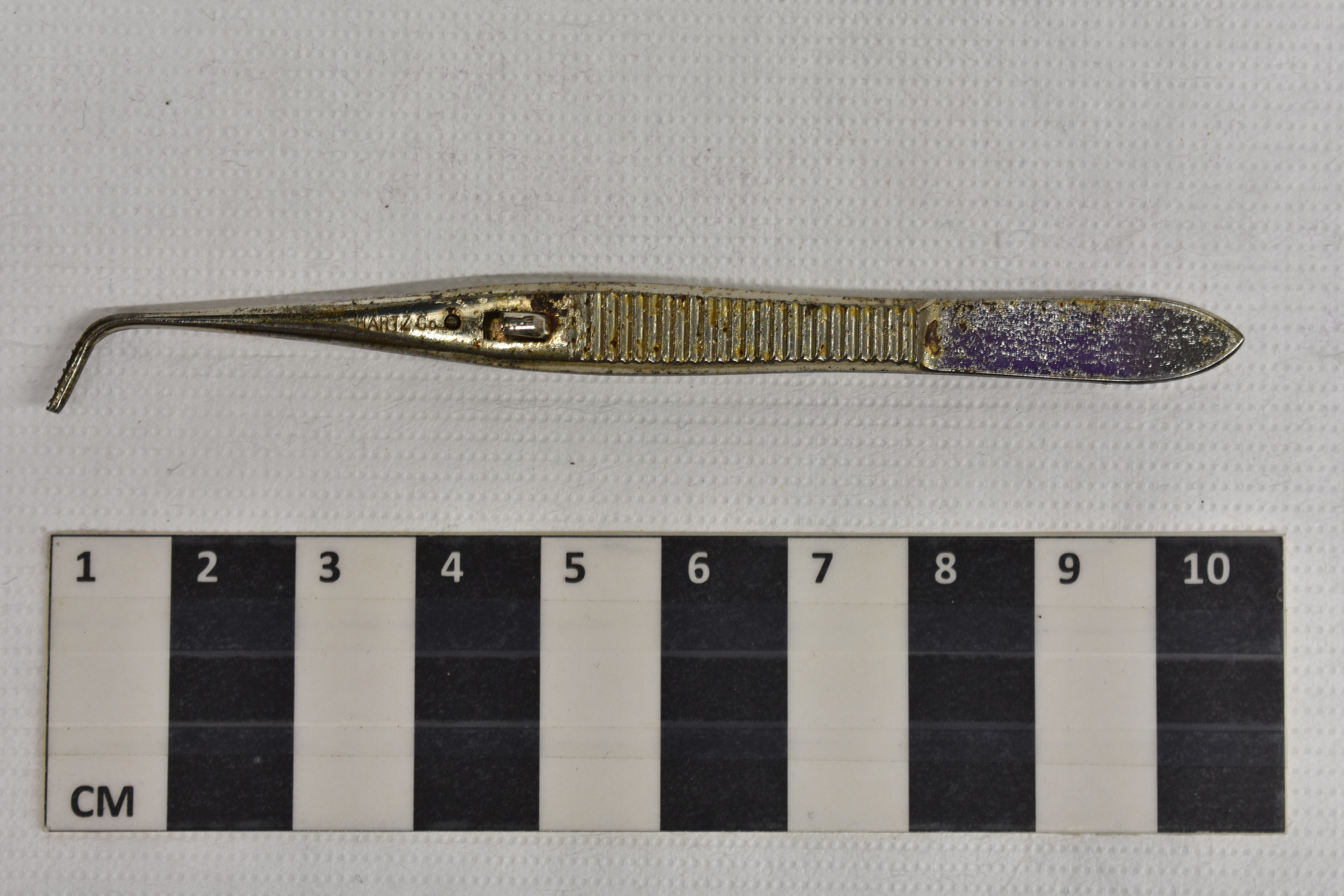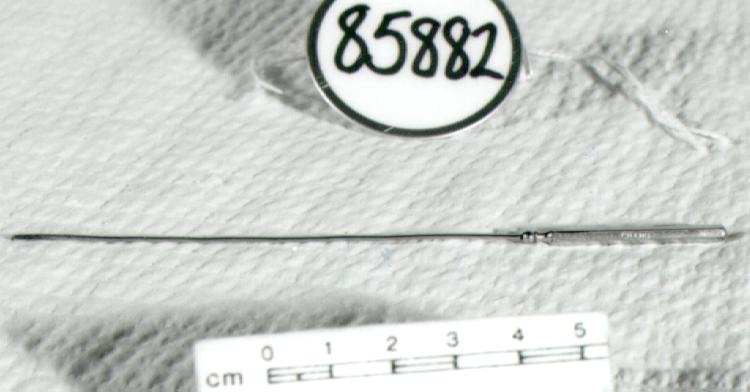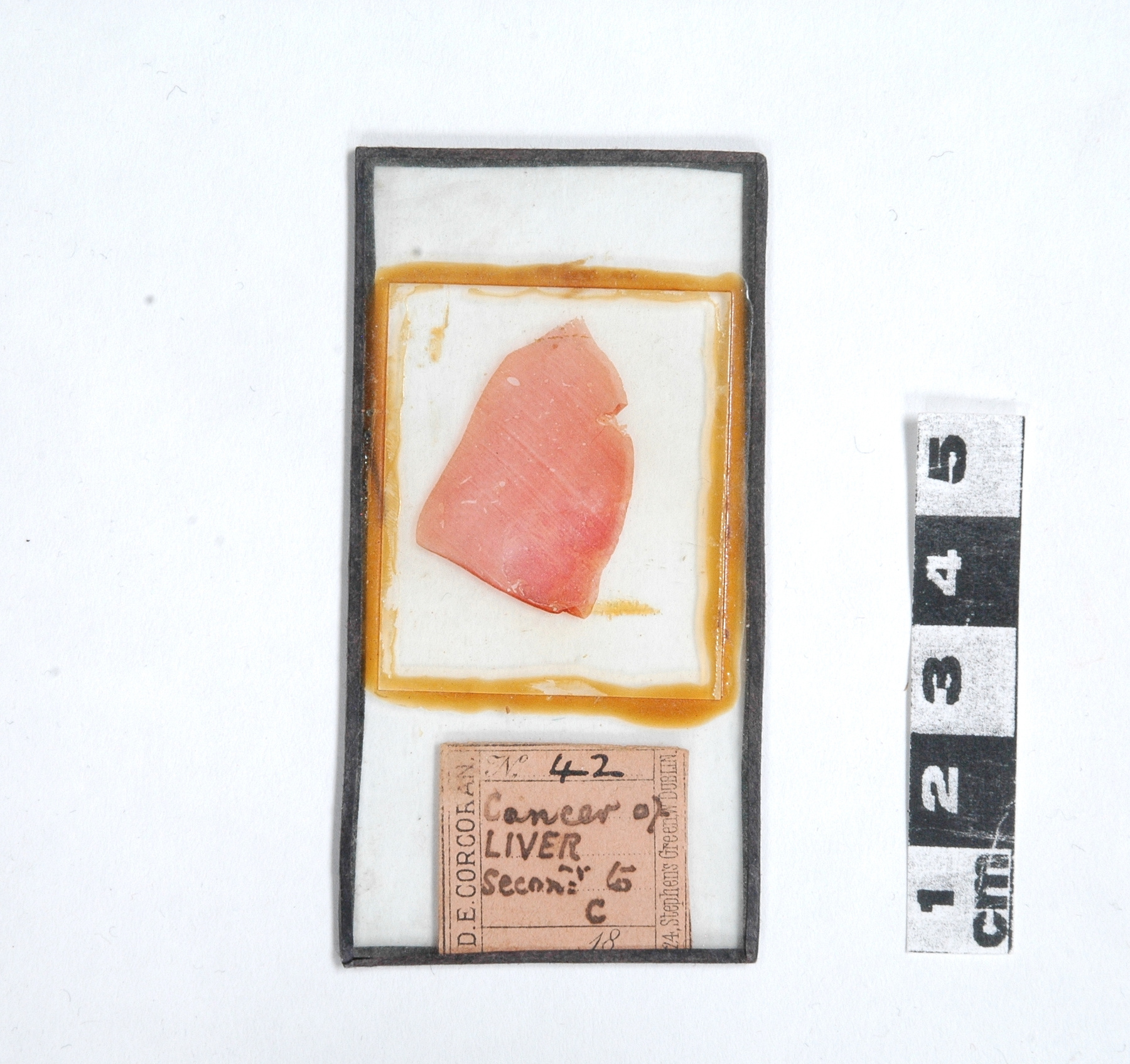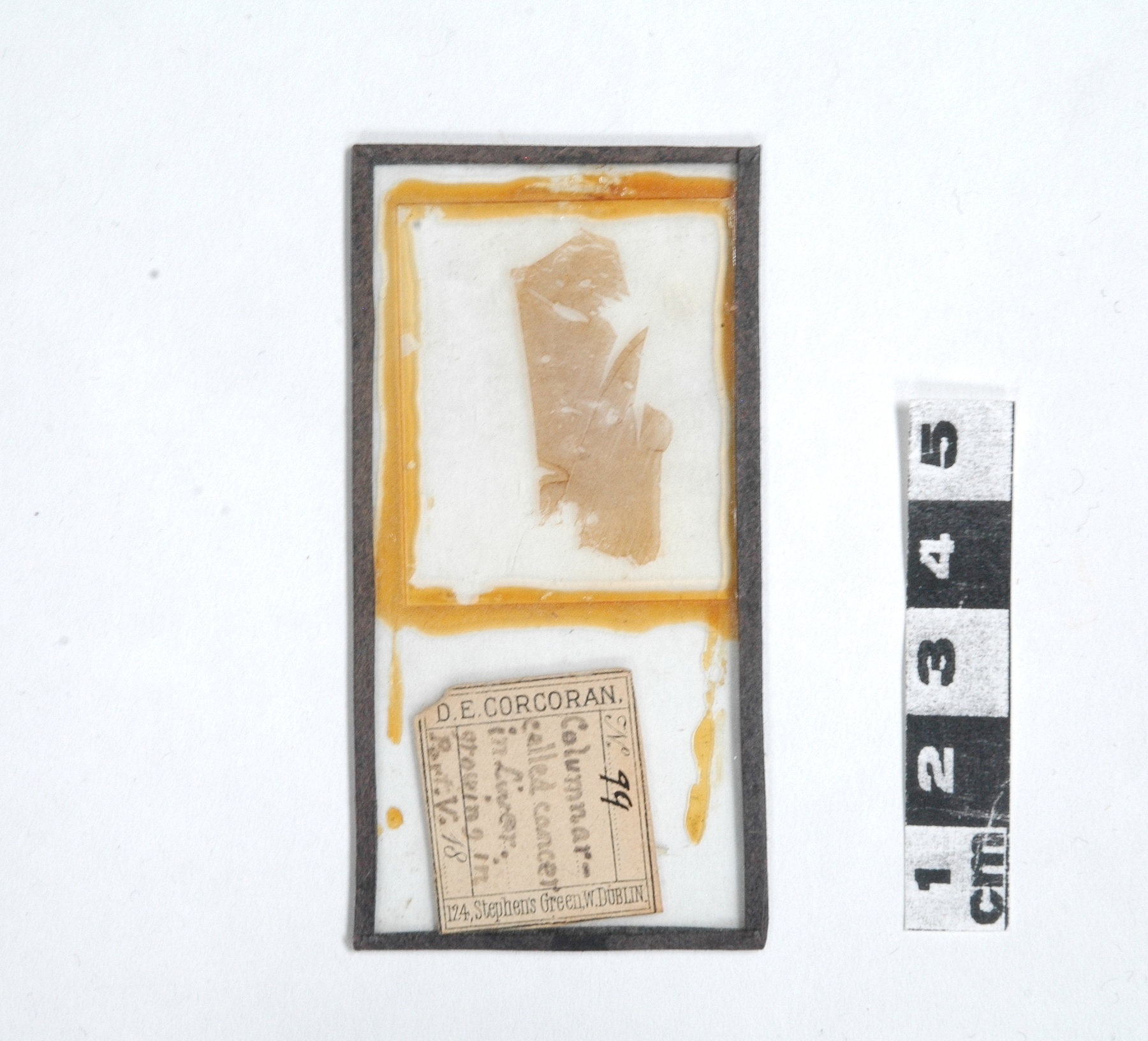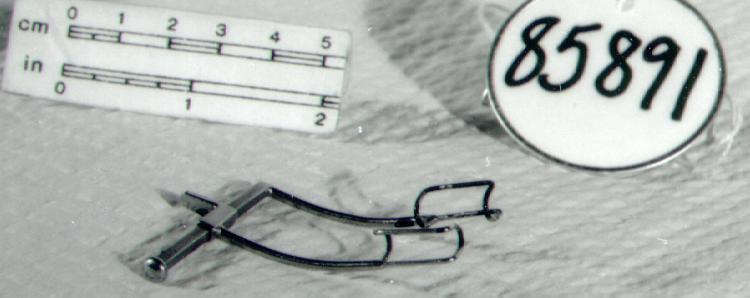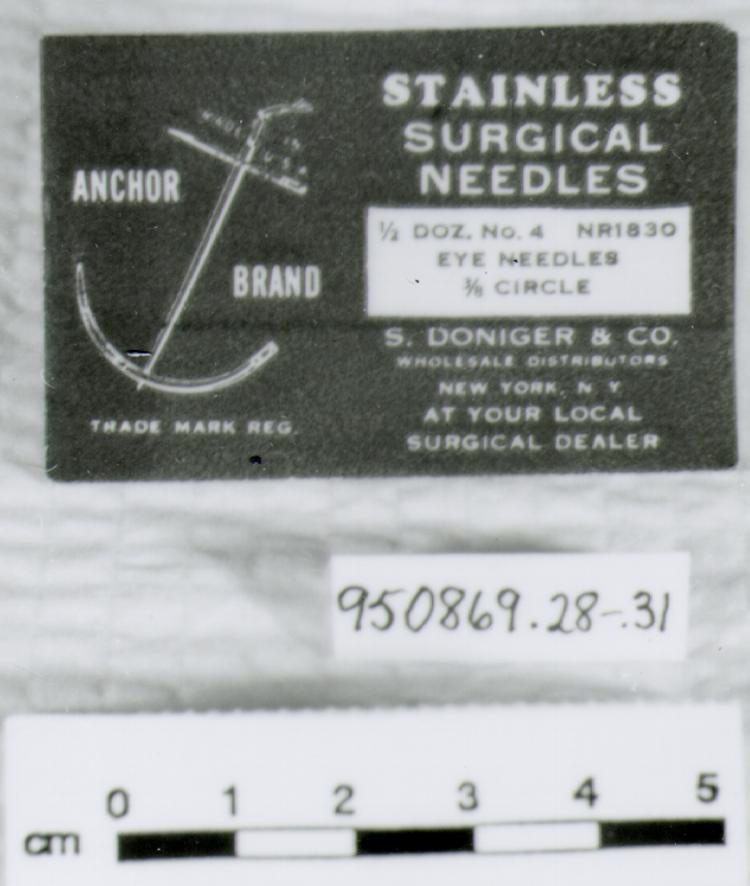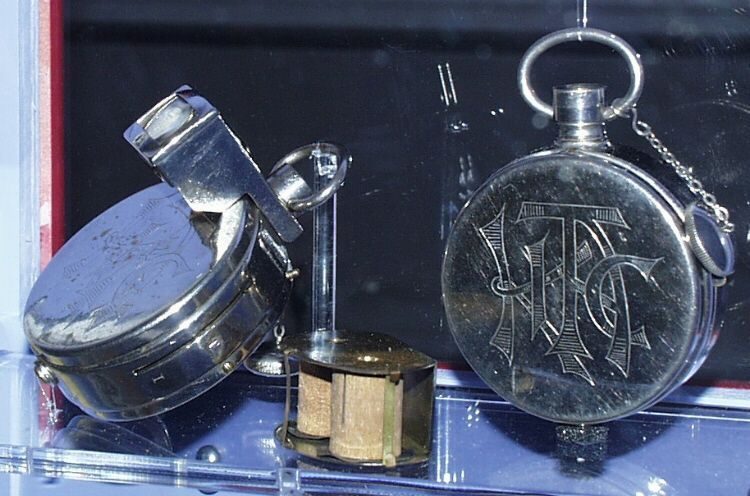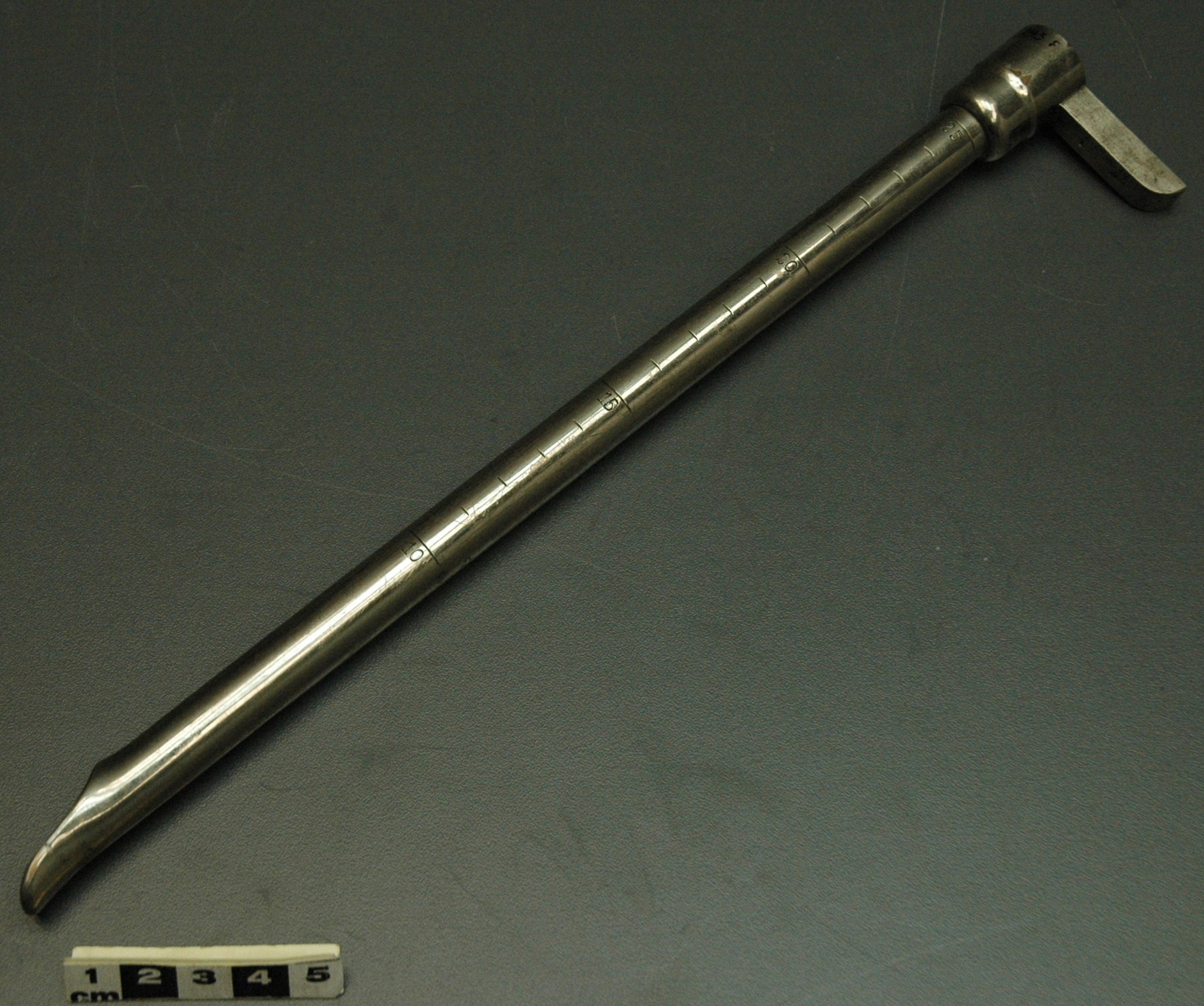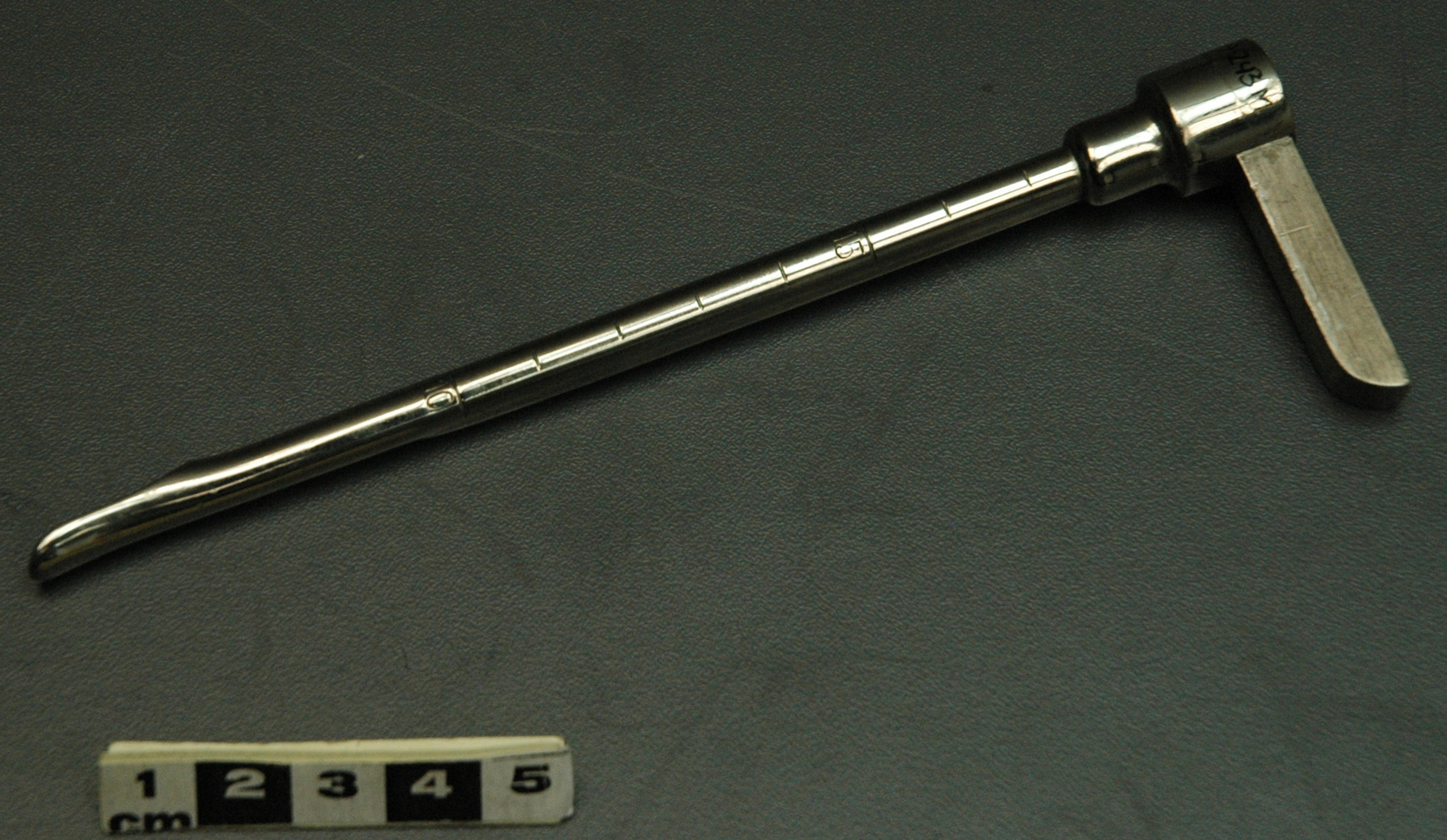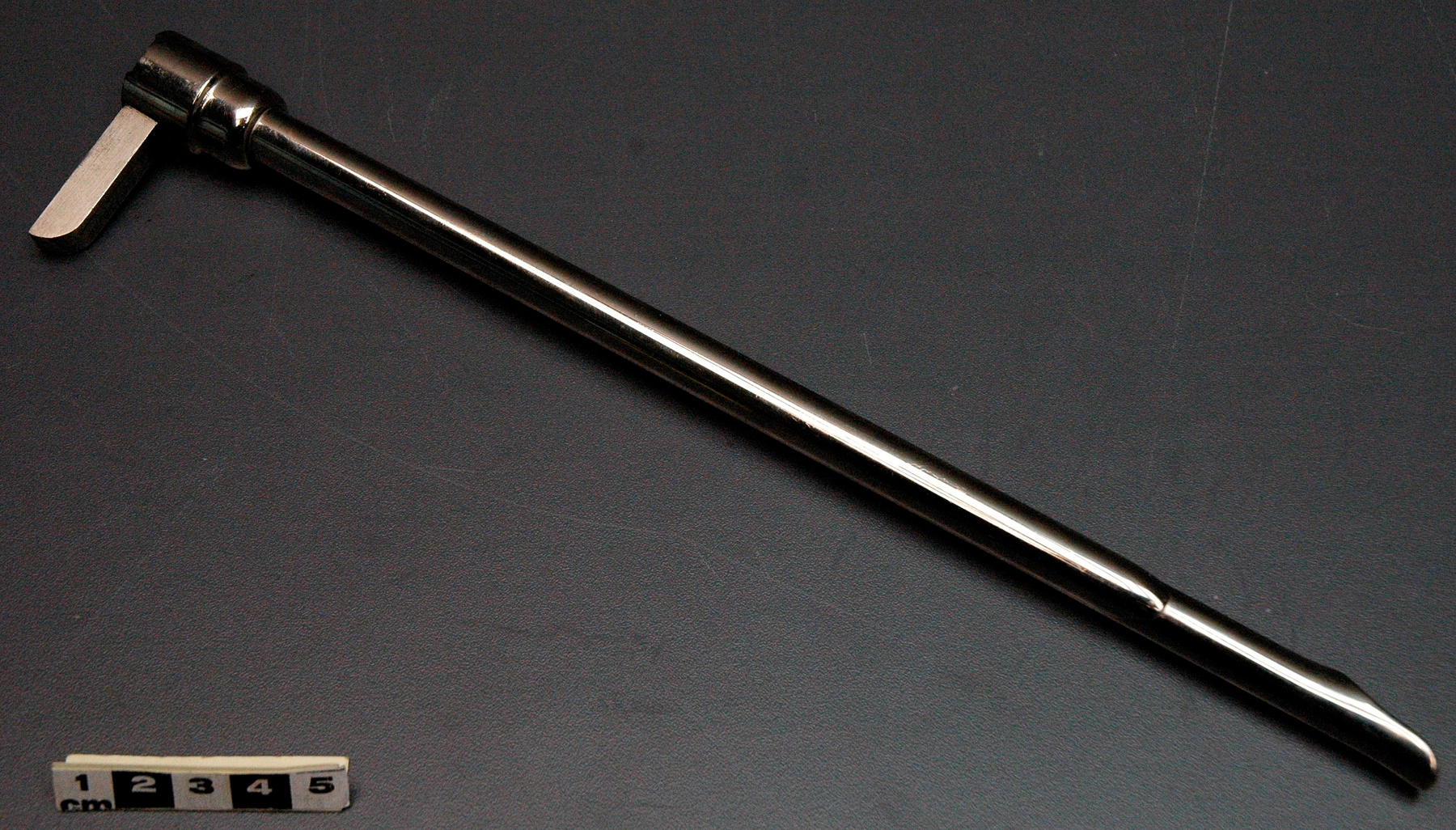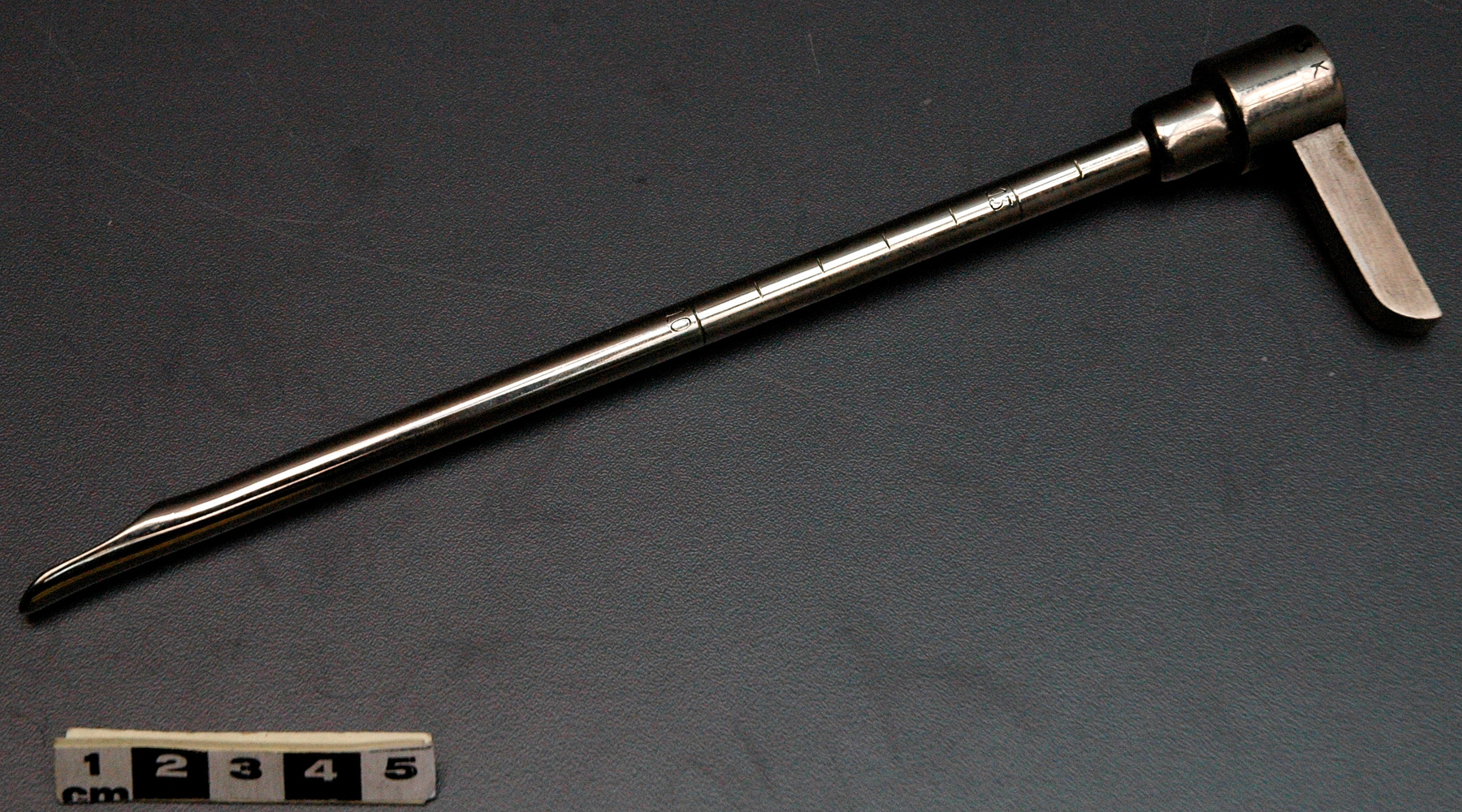Trocar
Use this image
Can I reuse this image without permission? Yes
Object images on the Ingenium Collection’s portal have the following Creative Commons license:
Copyright Ingenium / CC BY-NC-ND (Attribution-NonCommercial 4.0 International (CC BY-NC 4.0)
ATTRIBUTE THIS IMAGE
Ingenium,
2002.0471.001
Permalink:
Ingenium is releasing this image under the Creative Commons licensing framework, and encourages downloading and reuse for non-commercial purposes. Please acknowledge Ingenium and cite the artifact number.
DOWNLOAD IMAGEPURCHASE THIS IMAGE
This image is free for non-commercial use.
For commercial use, please consult our Reproduction Fees and contact us to purchase the image.
- OBJECT TYPE
- Surgical/ post mortem
- DATE
- 1920–1929
- ARTIFACT NUMBER
- 2002.0471.001
- MANUFACTURER
- Unknown
- MODEL
- 1281
- LOCATION
- Unknown
More Information
General Information
- Serial #
- N/A
- Part Number
- 1
- Total Parts
- 1
- AKA
- N/A
- Patents
- N/A
- General Description
- chrome plated steel.
Dimensions
Note: These reflect the general size for storage and are not necessarily representative of the object's true dimensions.
- Length
- 34.2 cm
- Width
- 1.7 cm
- Height
- 4.0 cm
- Thickness
- N/A
- Weight
- N/A
- Diameter
- N/A
- Volume
- N/A
Lexicon
- Group
- Medical Technology
- Category
- Instruments
- Sub-Category
- N/A
Manufacturer
- AKA
- Unknown
- Country
- Unknown
- State/Province
- Unknown
- City
- Unknown
Context
- Country
- Africa
- State/Province
- Unknown
- Period
- Used in 1920s; possibly also used later.
- Canada
-
Designed and used by Dr. Oscar Klotz to take liver samples from persons who had died from Yellow Fever in Africa. Dr. Klotz, Professor of Pathology, University of Toronto, was employed temporarily by the Rockefeller Foundation to study Yellow Fever. In 1926 he was able to disprove Noguche's theory that yellow Fever was due to a Leptospira [organism]. In 1927 he was instrumental in the discovery that the disease was reproducible in Macacus Rhesus and Simicus [monkeys], that it was due to a virus and that [at least from species of] mosquitos could transmit the infection. Dr. Klotz gave the trocar to Dr. William Boyd who later gave it to donor Dr. H.J. Barrie. Dr. Barrie used this trocar for taking soil samples.(Ref. 3) - Function
-
Instrument designed to take post mortem liver samples. - Technical
-
Instrument can be introduced into liver, used to sever a small sample, and then be withdrawn with sample securely housed within, protected from contaminants. - Area Notes
-
Unknown
Details
- Markings
- "1231" stamped into both sliding and stationary finger grip fittings on instrument. "982.17a" and "982.17b" printed by hand in black ink on instrument.
- Missing
- End broken off sliding cover for specimen receptacle.
- Finish
- Chrome plated steel.
- Decoration
- N/A
CITE THIS OBJECT
If you choose to share our information about this collection object, please cite:
Unknown Manufacturer, Trocar, circa 1920–1929, Artifact no. 2002.0471, Ingenium – Canada’s Museums of Science and Innovation, http://collection.ingeniumcanada.org/en/id/2002.0471.001/
FEEDBACK
Submit a question or comment about this artifact.
More Like This

